Zadar Outdoor Festival Returns for 2021 Spring and Autumn Editions
March 27, 2021 - After the one-year pause due to the coronavirus pandemic, and because of which the 2020 edition couldn’t be held, the Zadar Outdoor Festival marks its return to the joy of adventure and sports fans.
As Croatia’s National Tourist Board announces, this year’s festival has been confirmed for its Spring and Autumn editions, encouraging locals and foreigners to visit the region by developing a special form of tourism and preserving the natural and cultural heritage of Zadar, thus making a major step towards the development of sustainable tourism.
The beautiful landscape of Zadar County is characterized by exceptional geographical diversity, which makes the county an ideal place for various outdoor sports activities. As part of the Zadar Outdoor Festival, for the fourth time, the sea, land, and beauties of this region will be transformed into natural sports arenas for competitors from all over the world, who will test their sports capabilities and have great fun.
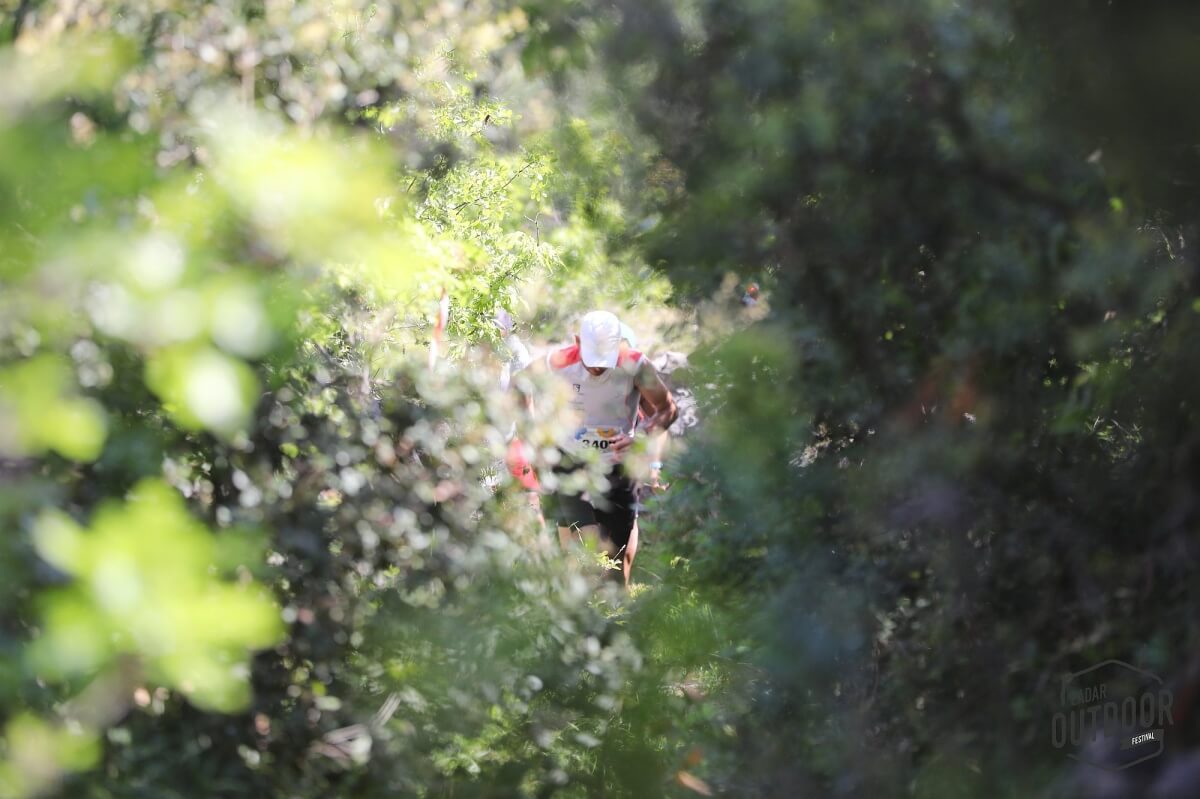
Zadar Outdoor Festival will be held in two parts, as their Spring and Autumn editions, in May and September 2021, respectively. The spring edition of the Festival will be held from May 8th to 9th on the green island of Ugljan in a safe environment and in compliance with all recommended measures. A kayak and SUP competition is planned along the phenomenal route around the islet of Galevac in front of Preko. For those who prefer the mainland, carefully prepared trails have been included as well as great climbing routes. In addition to exciting races, Zadar Outdoor Festival also offers a very interesting educational program, which includes various workshops led by experts in sports, recreation, and adventurous lifestyle.
The autumn edition of the festival will be held in September 2021 and it will include the Ravni Kotari Trail and the swimming marathon. You don't have to play sports professionally to participate in competitions. Each of the Festival’s activities is directed towards a wide audience.
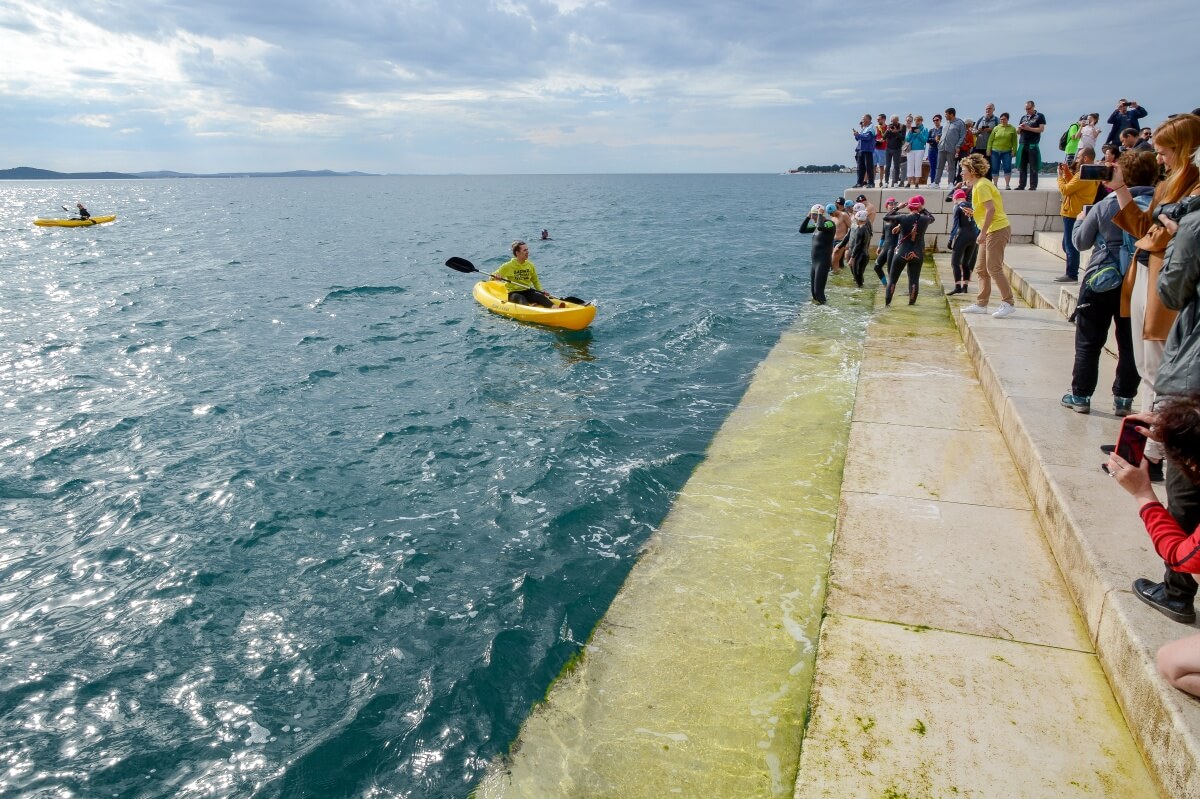
The Festival offers accommodation packages as a special offer for the participants and their families, with prices starting at 225 kuna. Participants will have the opportunity to spend their time and rest in the beautiful Vile Dalmacija or in the newly opened Camp Resort Ugljan. For more information about the accommodation offers, you can contact them by phone at +385 (0)23 286 108 or through an email to This email address is being protected from spambots. You need JavaScript enabled to view it..
It is possible to become a volunteer for the Zadar Outdoor Festival and in order to do so, be sure to write an email to This email address is being protected from spambots. You need JavaScript enabled to view it. if you’re interested.
To find more about the Zadar Outdoor Festival dates, accommodation, how to get to, and other FAQs, be sure to check their official website.
For more information about travel in Croatia, follow TCN’s dedicated page.
Zadar Wine Festival 2021 to be Held in Famous 16th-Century Arsenal
March 24, 2021 - Zadar Wine Festival 2021 gathers winemakers, caterers, hoteliers, and wine lovers across Croatia.
The city of Zadar, the Zadar hinterland, and nearby islands have created a significant market for discovering the best wines in Croatia and around the world. The Zadar Wine Festival provides you with an excellent opportunity to present wines, find your new favorite, and make new connections.
The festival aims to achieve successful business cooperation while enjoying the best wines and for exhibitors and visitors to understand why the Zadar Wine Festival is increasing its popularity.
The festival will be held on Friday, April 23rd and Saturday, April 24th in Zadar's Arsenal, a unique zero-category monument built in the 16th century. The multipurpose space has been described as an "indoor town square" due to its size. Its unique mix of tradition, culture, and modern design makes it the perfect location for a first-class experience such as the famous Zadar Wine Festival.
With its unique location, next to the Zadar city walls and the Muraj promenade, visitors and exhibitors get to enjoy a unique experience and witness the beauty of Zadar and its most famous attractions the Sea Organ and Greeting to the Sun.
Zadar Wine Festival 2021 is supported by the City of Zadar, Zadar County, the Tourist Board, the Croatian Chamber of Crafts, the Croatian Chamber of Commerce, the Croatian Sommelier Club, the Association of Winemakers, and others. Whether you're going for the experience, finding your new favourite wine, or making business connections, there is something for everyone to enjoy at the Zadar Wine Festival.
You can check out the two-day program on their website, grab a ticket and enjoy the beauty of Zadar while sipping on Croatia's best wines.
For more about lifestyle in Croatia, follow TCN's dedicated page.
Zadar: Contracts for Social Entrepreneurship Worth HRK 1O mn Presented
ZAGREB, 13 March 2021 - Labour Minister Josip Aladrović and deputy director of the National Foundation for Civil Society Development Luka Bogdan presented eight contracts in Zadar on Friday worth nearly HRK 10 million for projects to strengthen the capacities of old and new social enterprises and entrepreneurs.
"Today, we signed contracts with entities that are just starting and that are developing their business in accordance with principles of social entrepreneurship," said Labour, Pension System, Family and Social Policy Minister Josip Aladrović, noting that the ministry has provided over HRK 112 million to encourage social entrepreneurship.
The pandemic and crisis have created an opportunity for doing some things better and fairer, he said.
I believe that we can find a way in our business to regain a positive social impact. There are four counties among the co-signers: Zadar, Šibenik-Knin, Split-Dalmatia and Lika-Senj counties. All forms of entrepreneurship in these areas are more important than ever before, mostly due to the impact the pandemic has had on the tourism sector and all related activities, Minister Aladrović said, adding that by signing the projects they want to strengthen the capacities of old and new social enterprises through additional employment and education.
Deputy director of the National Foundation for Civil Society Development Luka Bogdan said that social entrepreneurship was one of the models connecting solidarity and entrepreneurship that could be seen every day, not just in a crisis.
The purpose of the projects is to employ members of vulnerable groups -- women, Croatian war veterans and victims of the Homeland War, people with disabilities and others, and this will include creating new jobs and improving the knowledge and skills of employees through specialised forms of training and employment.
Before presenting the contracts co-financed by the European Social Fund, Minister Aladrović and his associates had a working meeting with representatives of the City of Zadar on increasing capacities of retirement homes.
According to state secretary Marija Pletikosa, it is estimated that about 5% of the population aged over 65 needs accommodation in a retirement home, and Zadar has not yet reached the capacity to accommodate 3%, so it is necessary to build new retirement homes.
Aladrović said that he supported the idea because increasing the number of accommodation units for the elderly population across Croatia was one the priorities of his ministry.
For more business news in Croatia, follow our dedicated section.
PHOTOS: Outstanding Contemporary Croatian Architecture of the Year
February 10, 2021 – 10 of the most outstanding examples of contemporary Croatian architecture have been selected by the Association of Croatian Architects to compete in the extremely prestigious Mies van der Rohe Awards. Held only once every two years, they are the European equivalent of the Pritzker Prize for Architecture.
The Mies van der Rohe Awards are a really big deal. The greatest works of European architecture compete for recognition in the competition. The greatest success of Croatian architecture in the awards was attained by UP studios' Toma Plejić and Lea Pelivan, who received a special award for upcoming architects and had their high school in Koprivnica named the best building in that category in 2009. The success has had a considerable impact on their careers since.
Being held only once every two years, Croatian architecture projects completed since the closure of entries for the 2019 awards are eligible to be submitted. Here are the outstanding examples of contemporary Croatian architecture that will represent the country in 2022.
Cinema Urania Zagreb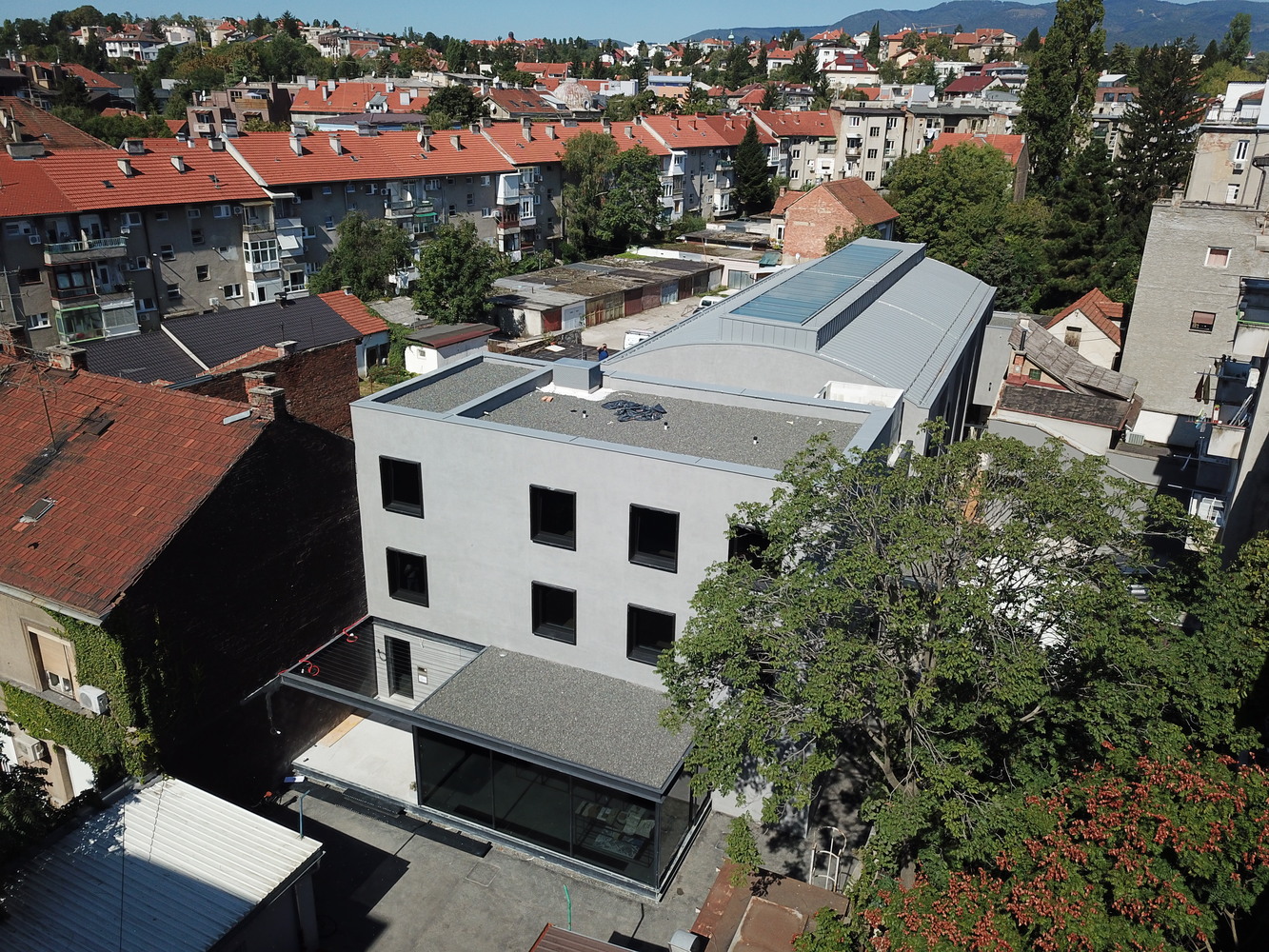
An old neighbourhood cinema built into the back streets near Kvatric. In their redesign, 3LHD preserved the best features from this early example of concrete engineering in Croatian architecture. They added a glass pavilion at the entrance, atriums and skylights, flooding the former darkness with the natural light needed for its new purpose as an event and work space.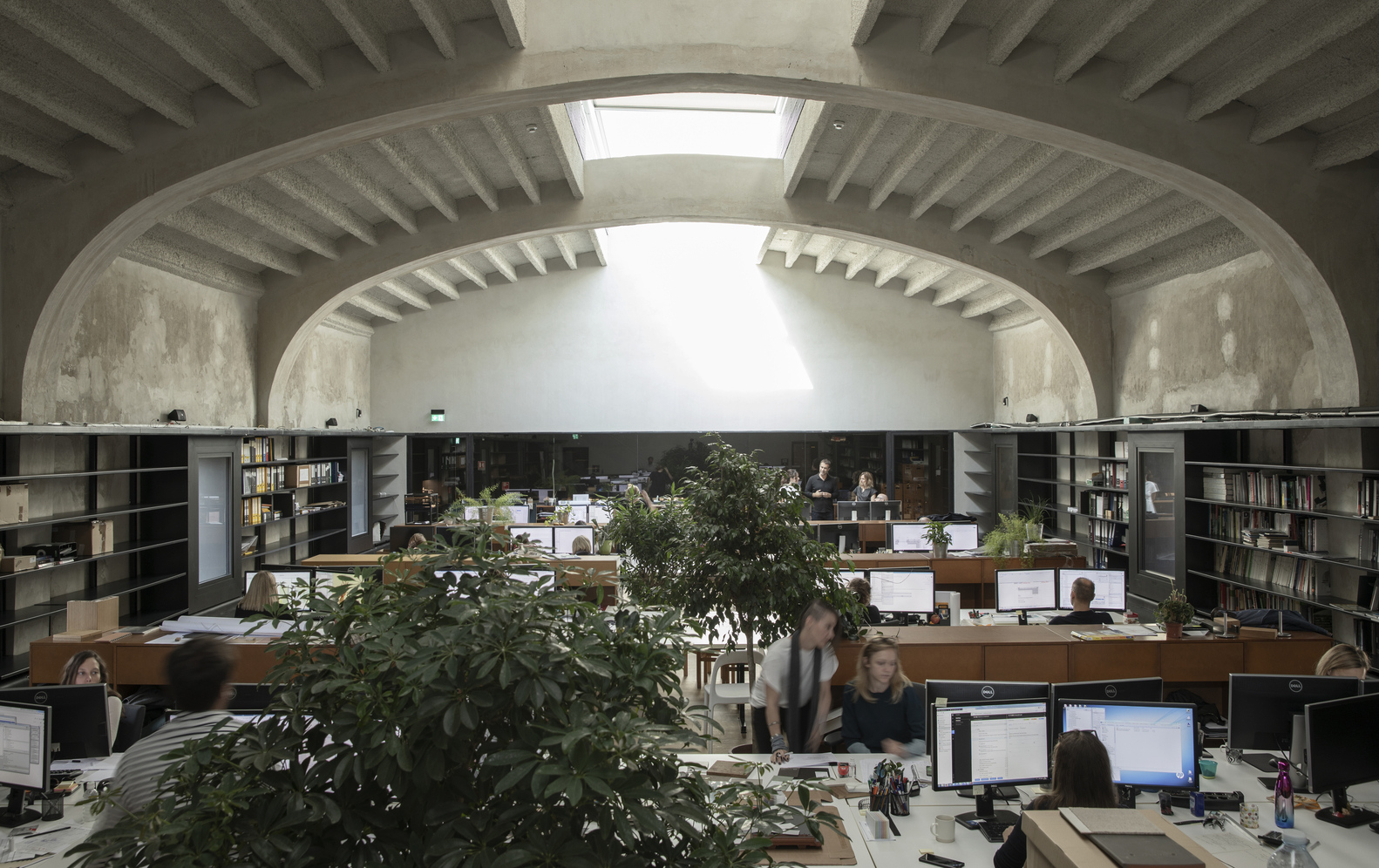 © Jure Živković
© Jure Živković
Grand Park Hotel, Rovinj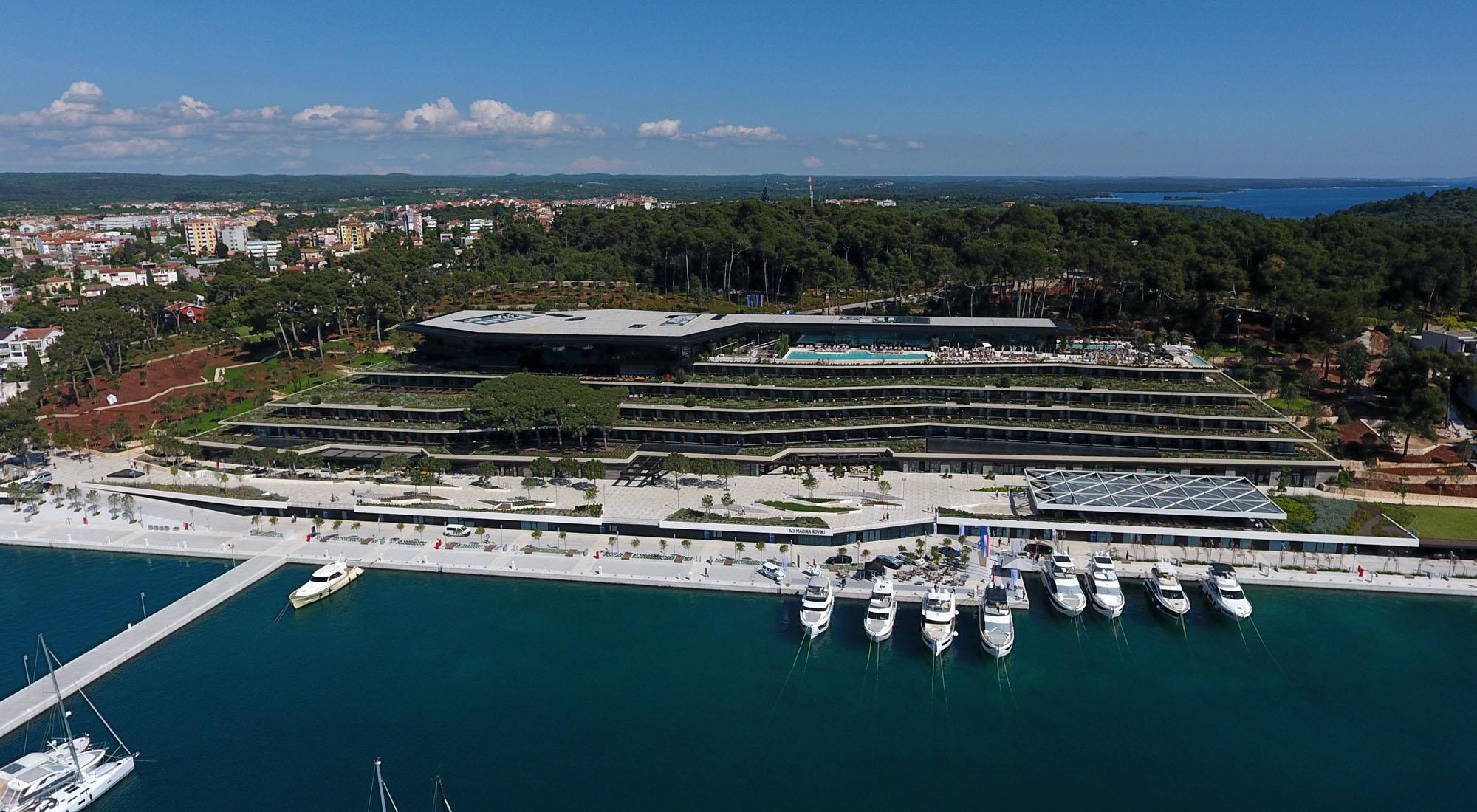
Sprawling widely across six stepped levels, the new luxury Grand Park Hotel and spa could easily have looked a long swipe of concrete. But, by places greenery on each of its staged roofs, architects 3LHD have ensured that no matter where you are in the 500-guest-capacity building, your view places you within a garden, looking out onto Rovinj Old Town and the expanse of the Adriatic. Croatian architecture at its most breathtaking.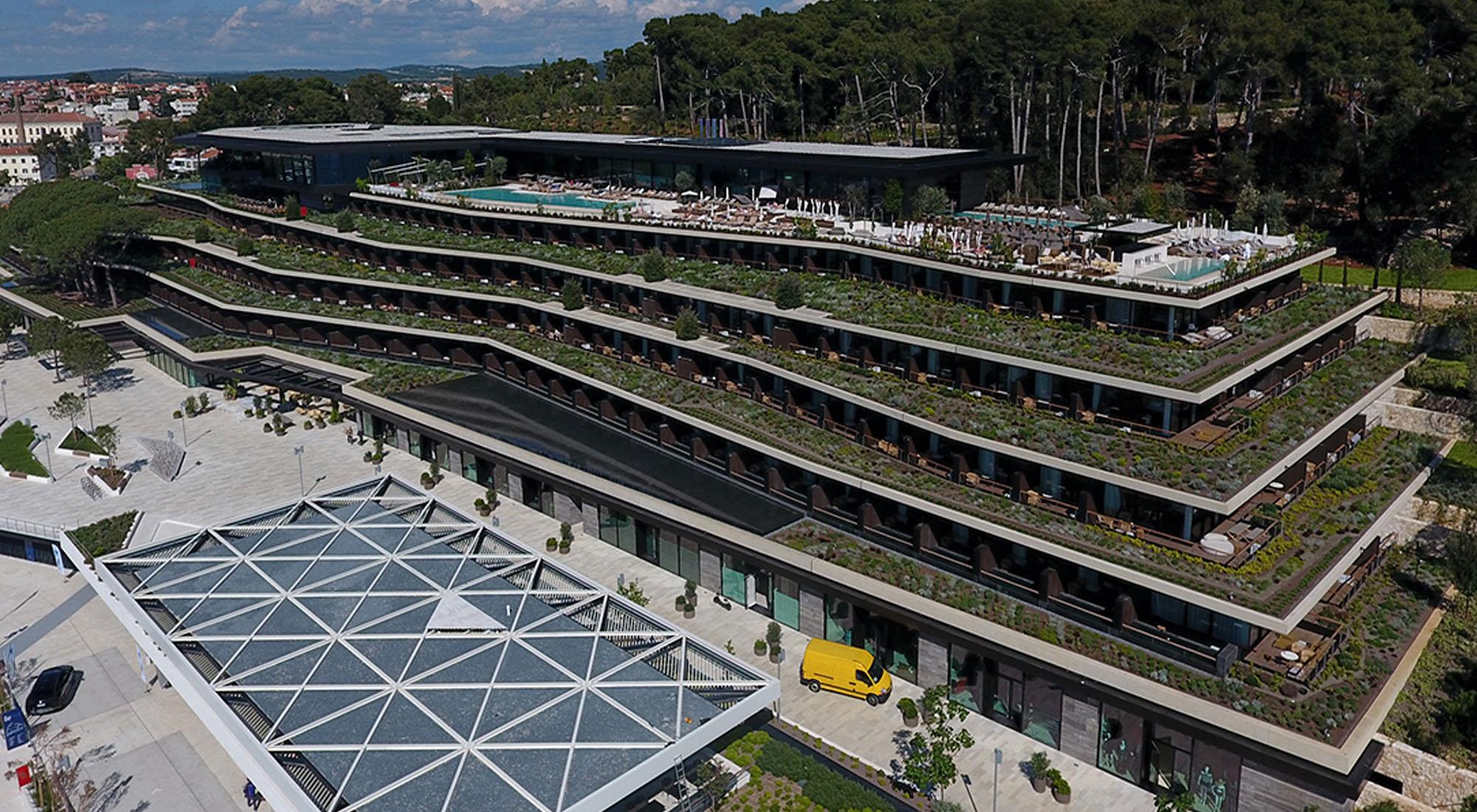 © Alukoenigstahl hr
© Alukoenigstahl hr
Ivanja Reka Elementary School, south Sesvete, east Zagreb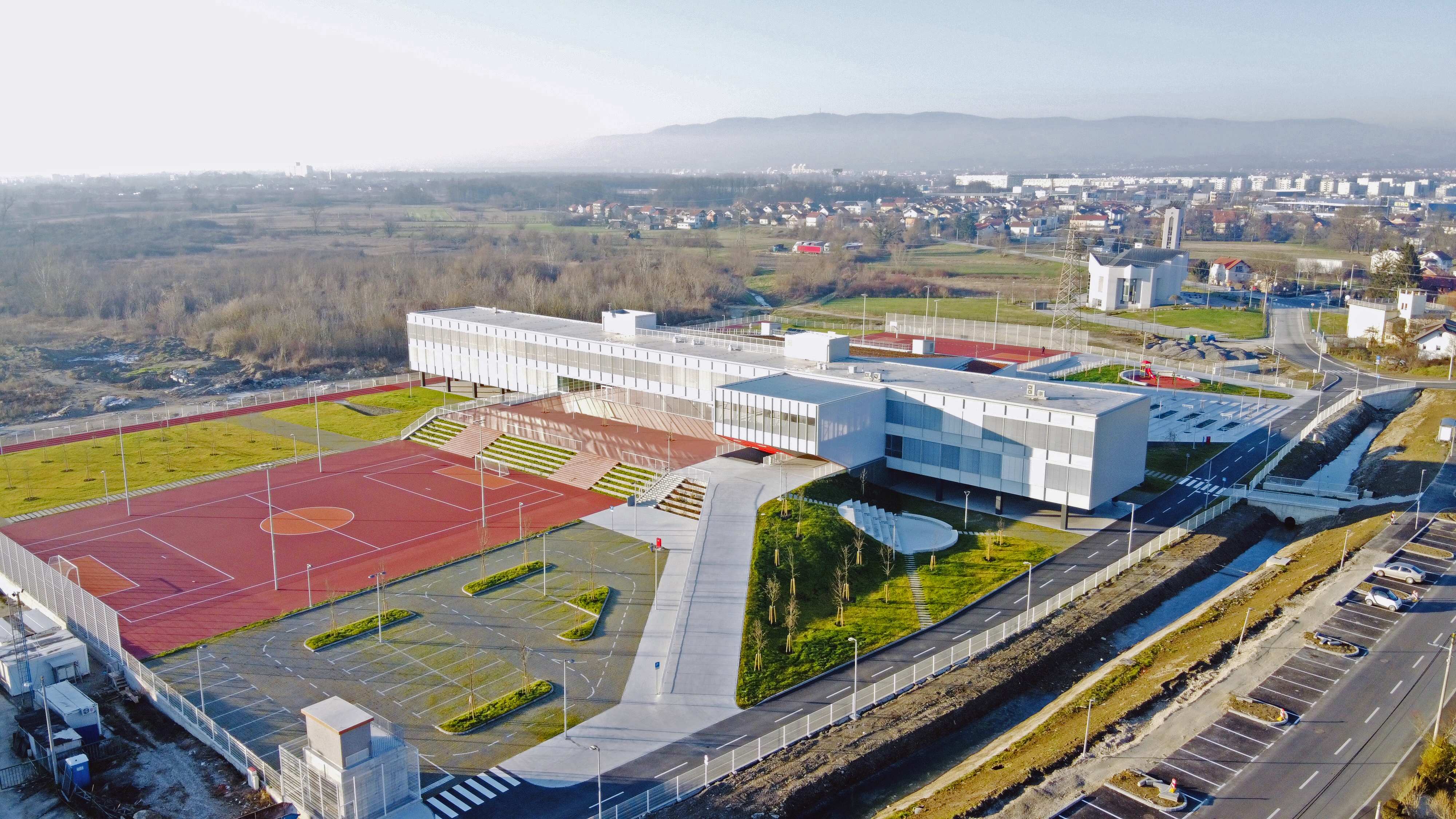
If every elementary school looked as pretty and was as well equipped as Ivanja Reka Elementary School in the south of Sesvete, eastern Zagreb, you could well believe daily attendance would never drop below 100%. Designed by a team of architectural authors (SUBMAP studios Marija Burmas and Ivo-Lola Petrić, and Jakša Kalajžić from JKA Arhitekti), the multi-level main building sits centrally, surrounded by sports, recreation and other facilities creating an impressive view for both those outside and within.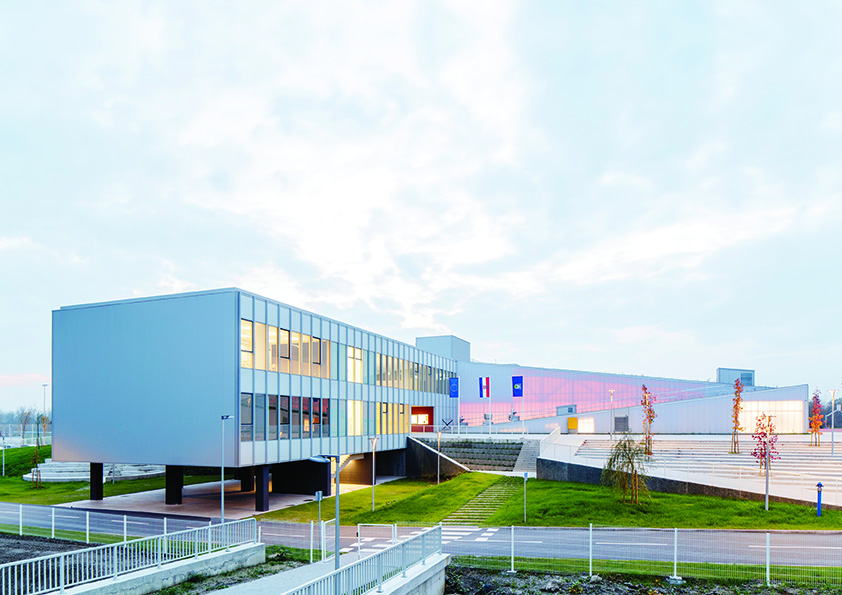 © Ivanja Reka Elementary School / Domagoj Blažević
© Ivanja Reka Elementary School / Domagoj Blažević
Roxanich Wine & Heritage Hotel, Motovun, Istria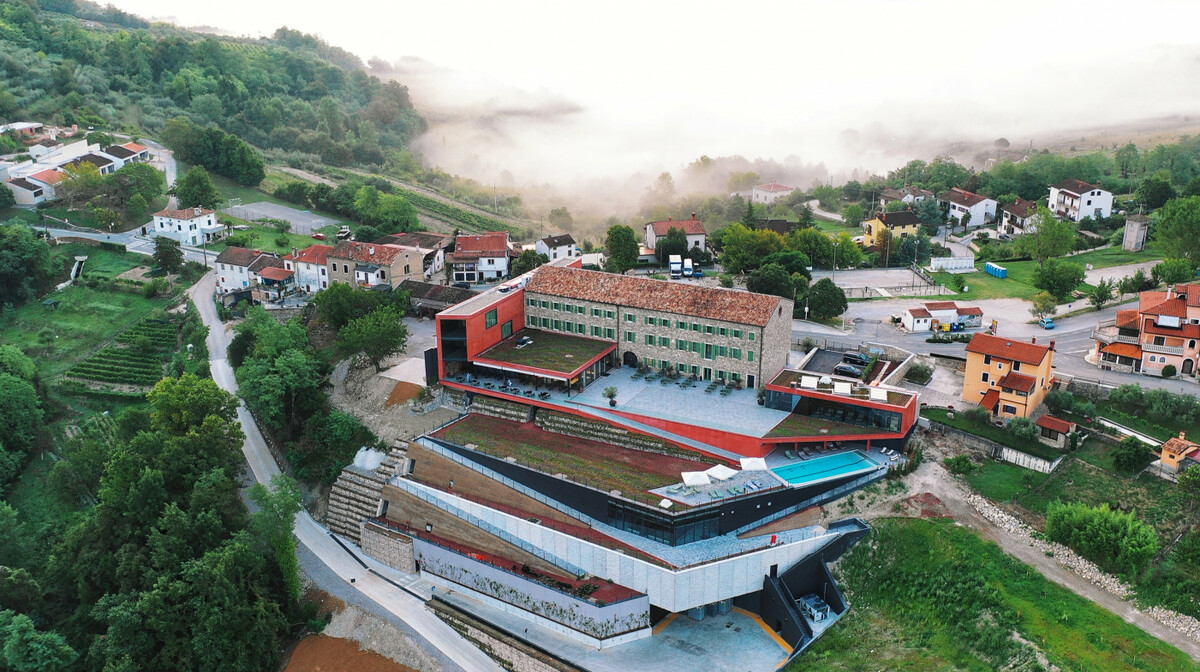
The view is unmistakably Istria. Vineyards carpet the land below and - rising above - the picturesque hilltop town of Motovun. Helmed architecturally by consistently bold Rijeka designer Idis Turato, this multi-level, multi-purpose redesign retains the traditional feel of its existing stone building and its purpose – there's a huge wine cellar beneath – but has opened up the space to give stunning views, not least over a sun deck that spectacularly reflects the sunrise and sunset. This is an active winery, with works and equipment all housed within its lower floors, not that you could tell from the 25 person capacity boutique hotel, restaurant and wine shop upstairs.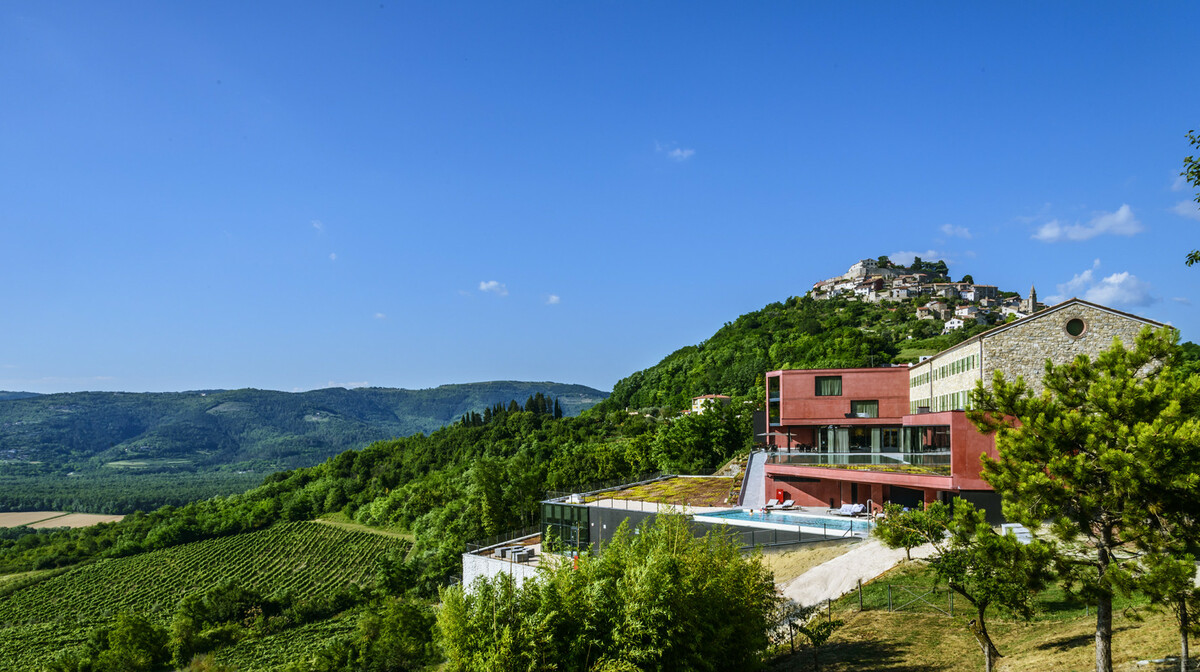 © Roxanich.hr
© Roxanich.hr
Four Houses for Four Brothers, Diklo, Zadar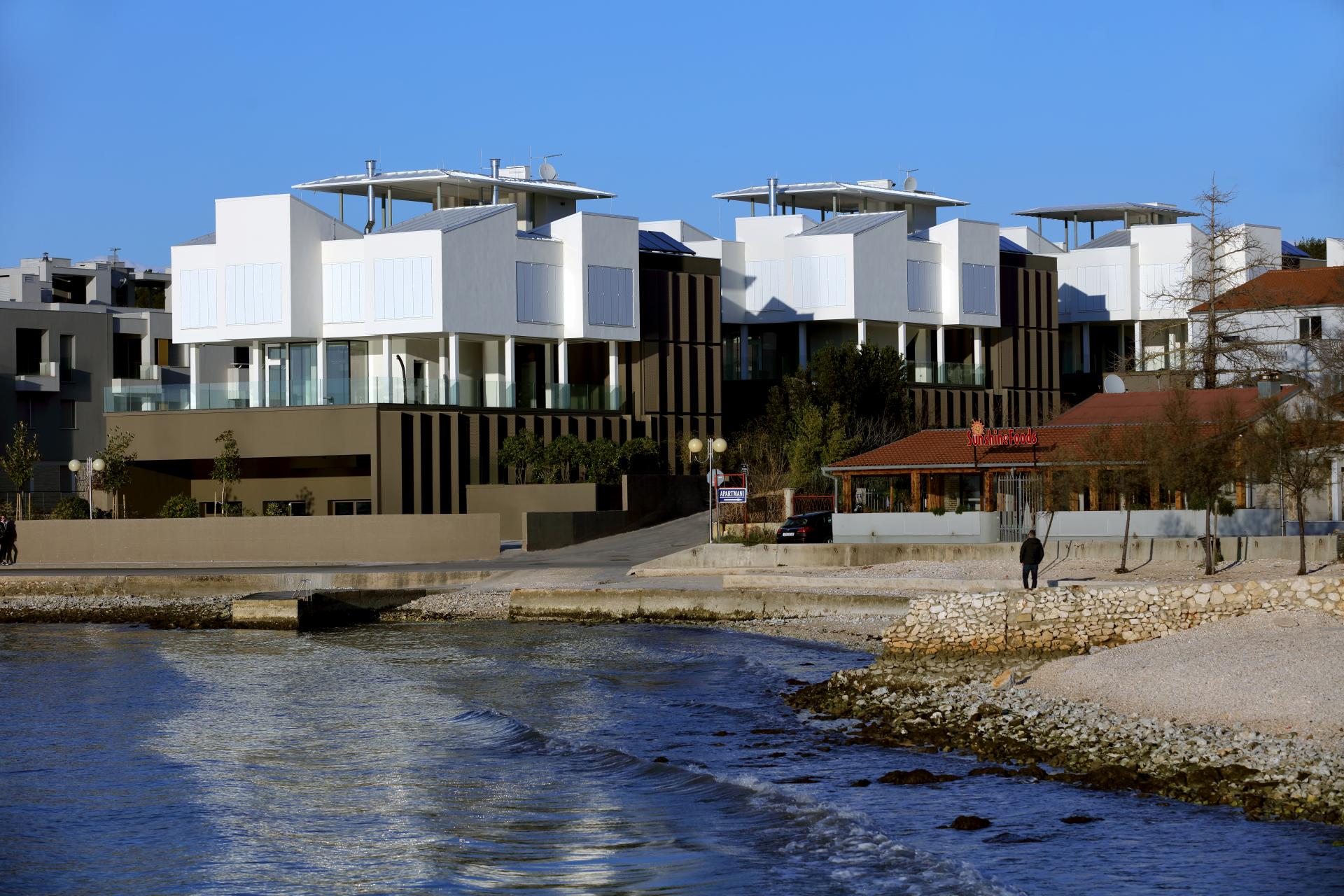
Judging from a theme of project titles used by architects Iva Letilović and Igor Pedišić, we're not sure that Four Houses for Four Brothers was actually commissioned by four brothers or that four live there. But, you could well believe they could. The ultra-modern set of independent houses, located next to a beautiful stretch of coast in a north Zadar neighbourhood, was specifically designed to address a distinctly Croatian reality – how to open up some of your dwelling to seasonal guests while you remain at home. The design separates the buildings clearly into separate quarters which allow privacy, comfort and minimal encroachment for both visitors and residents.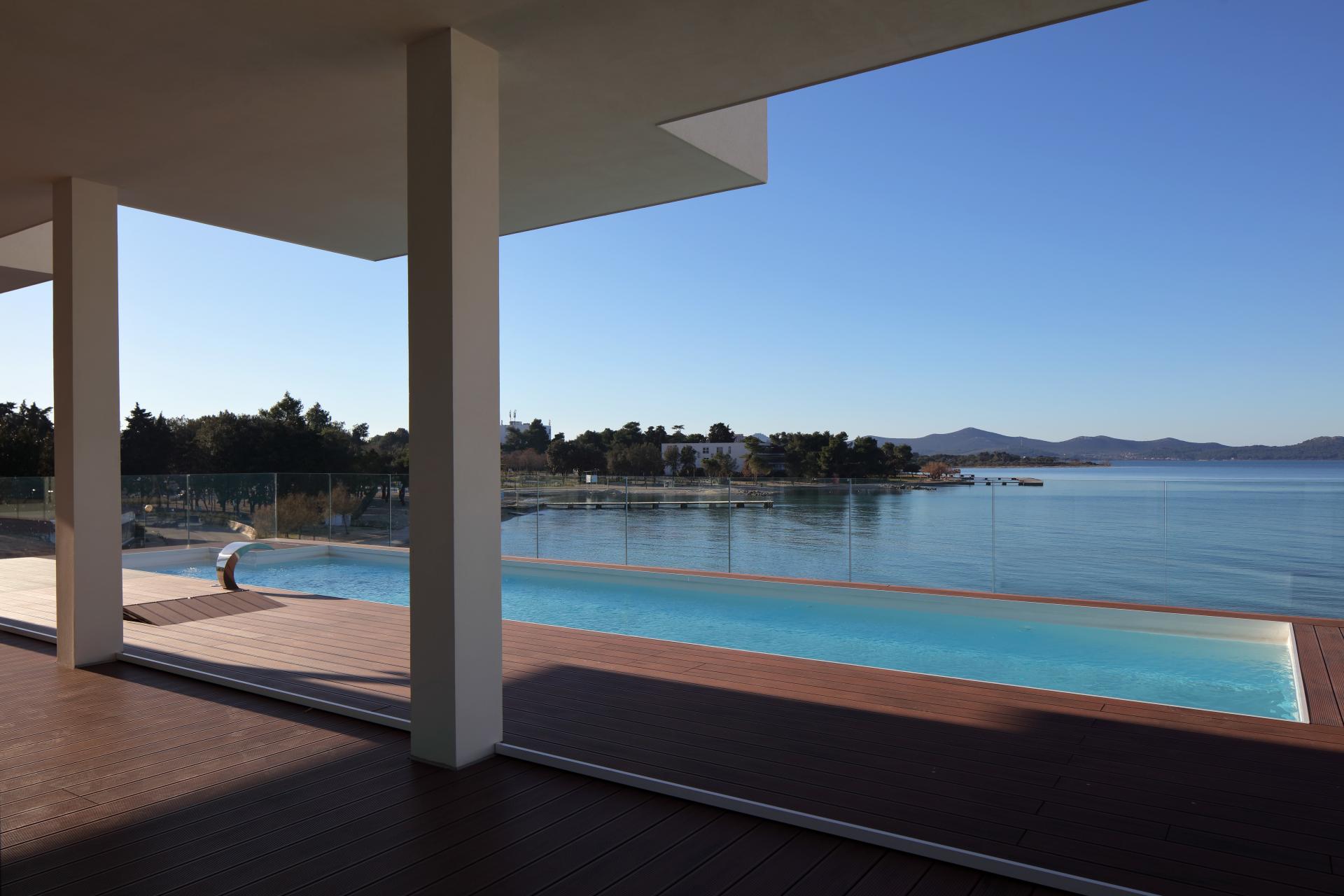 © Igor Pedišić
© Igor Pedišić
Galić Winery, Kutjevo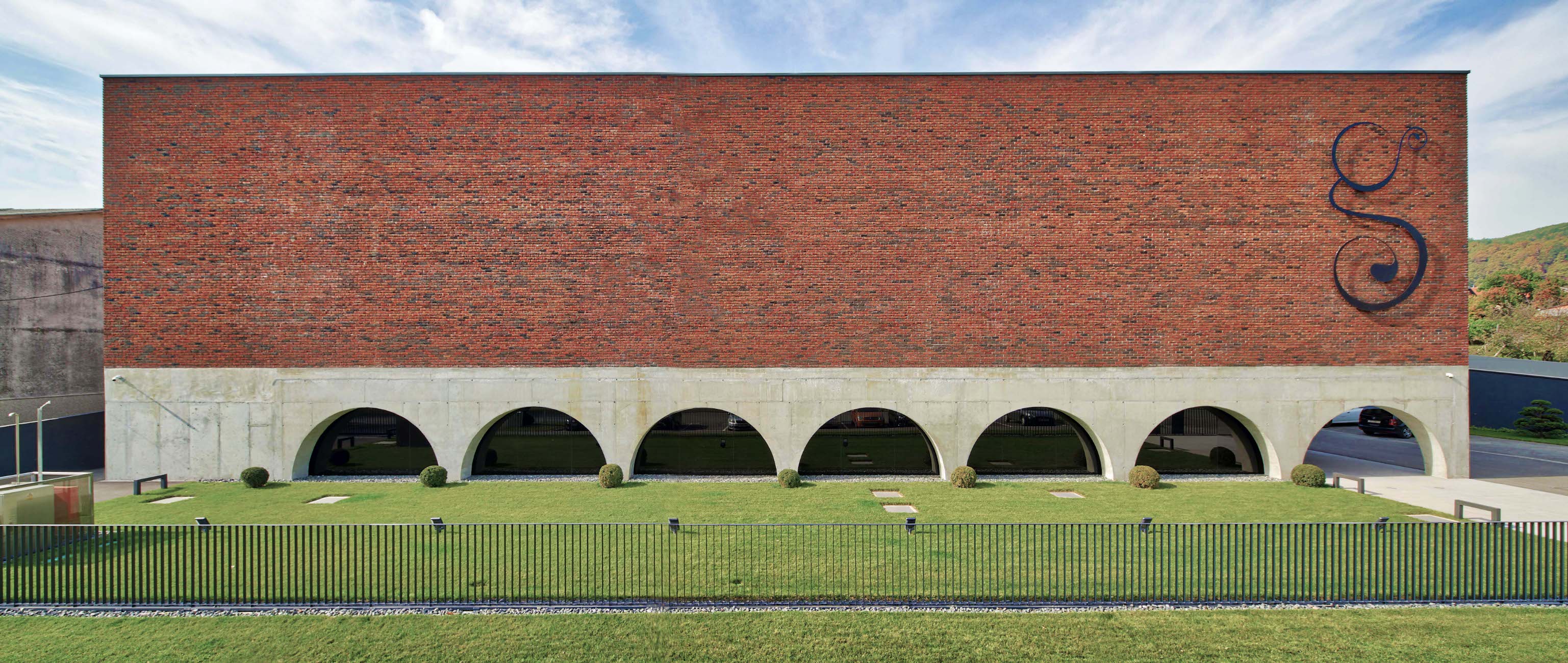
Award-winning outfit Zagreb-based studio Dva arhitekta have an existing, jaw-dropping design for a rural winery commissioned by famous makers Galic. However, that project, as yet, remains unrealised. But, their winery for Galic in the centre of Kutjevo town is complete. Melding the traditional and the contemporary, the upper section of the building is a bold and unblemished red brick, adorned with the winemaker's unmistakable logo. Beneath, concrete arches invite your eyes into the actual wine cellar – neat rows of barrels, protected behind glass walls that are set back from the facade. Brilliant!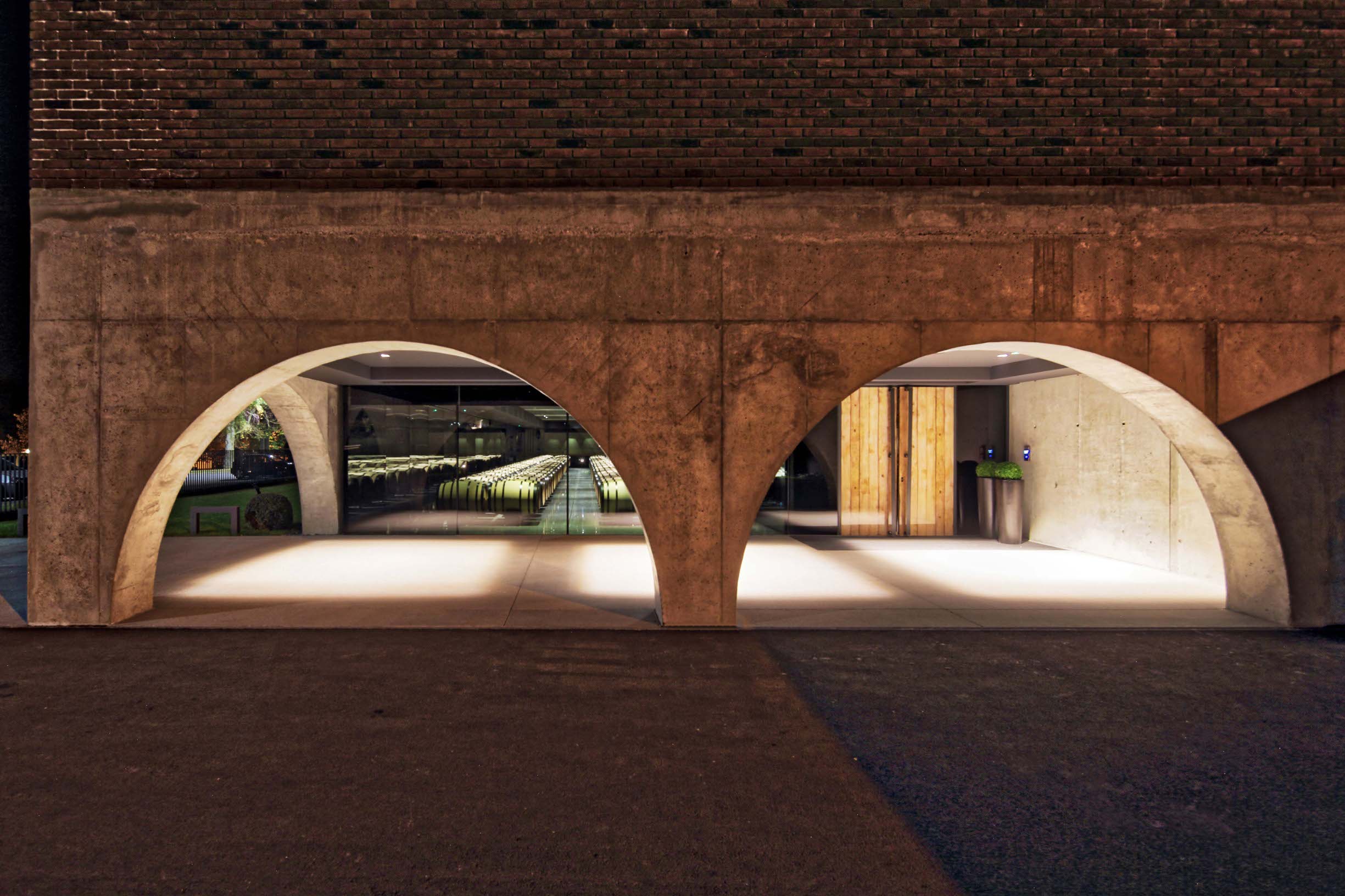 © Damir Fabijanić
© Damir Fabijanić
Seecel Centre, Zagreb
Designed as a regional centre for the development of entrepreneurs and its construction costs generously part-funded by European money, the Seecel Centre arrived long overdue and does not house its intended inhabitants. Such matters are best left for different articles as, here, we're concerned with the undeniable finery of this building's architecture and appearance. Holding space for accommodation, offices, communal collaboration, education and presentations, the five-floored building uses ultra-modern building materials and construction methods to make it low-energy, its great blocks of covered concrete, with glass windows set further back, echoing old fortifications. It was designed by Igor Franić who, in Croatia, is perhaps best known for the Museum of Contemporary Art in Zagreb and completed by him and his team at SZA / Studio za arhitekturu d.o.o.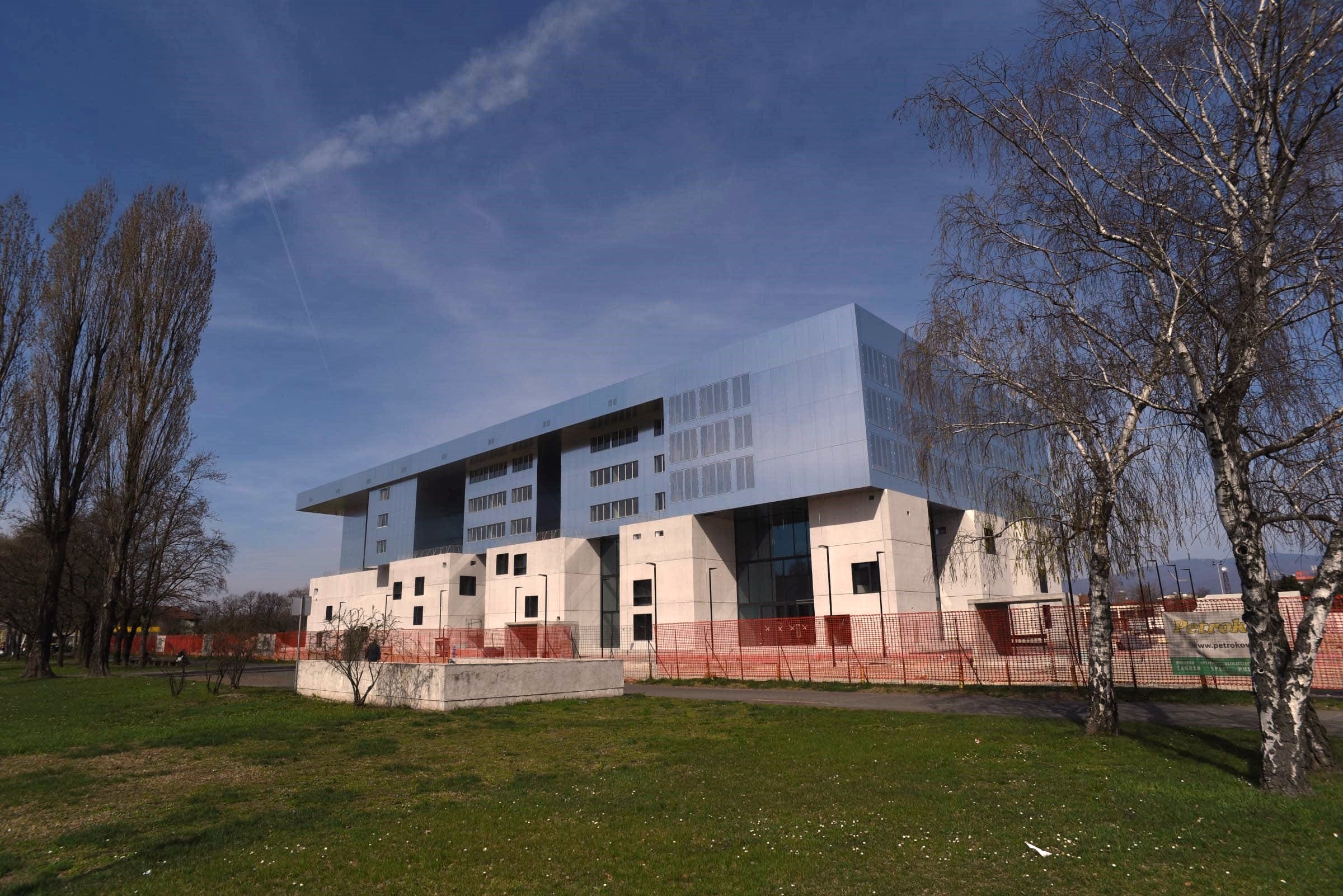 © Site Project d.o.o.
© Site Project d.o.o.
Trg Poljana, Šibenik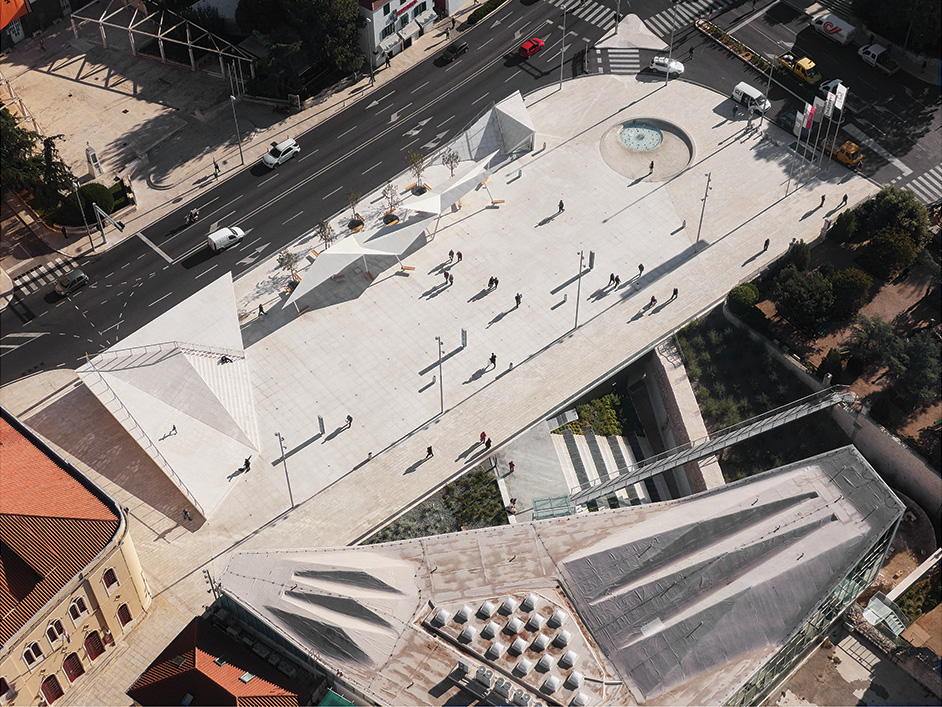
Not a small amount was asked of project architects Atelier Minerva from Dubrovnik in the task to create Trg Poljana in Šibenik. The site had long been earmarked for a much-needed, official town square – a place for events and public gatherings. But, the town was also woefully short on parking. By burying a multi-level car park beneath the open space, the architects successfully met both demands. Triangular shapes sit at an angle above shaded seating, echoing the inclines on the roof of the Juraj Šižgorić City Library opposite. Clever.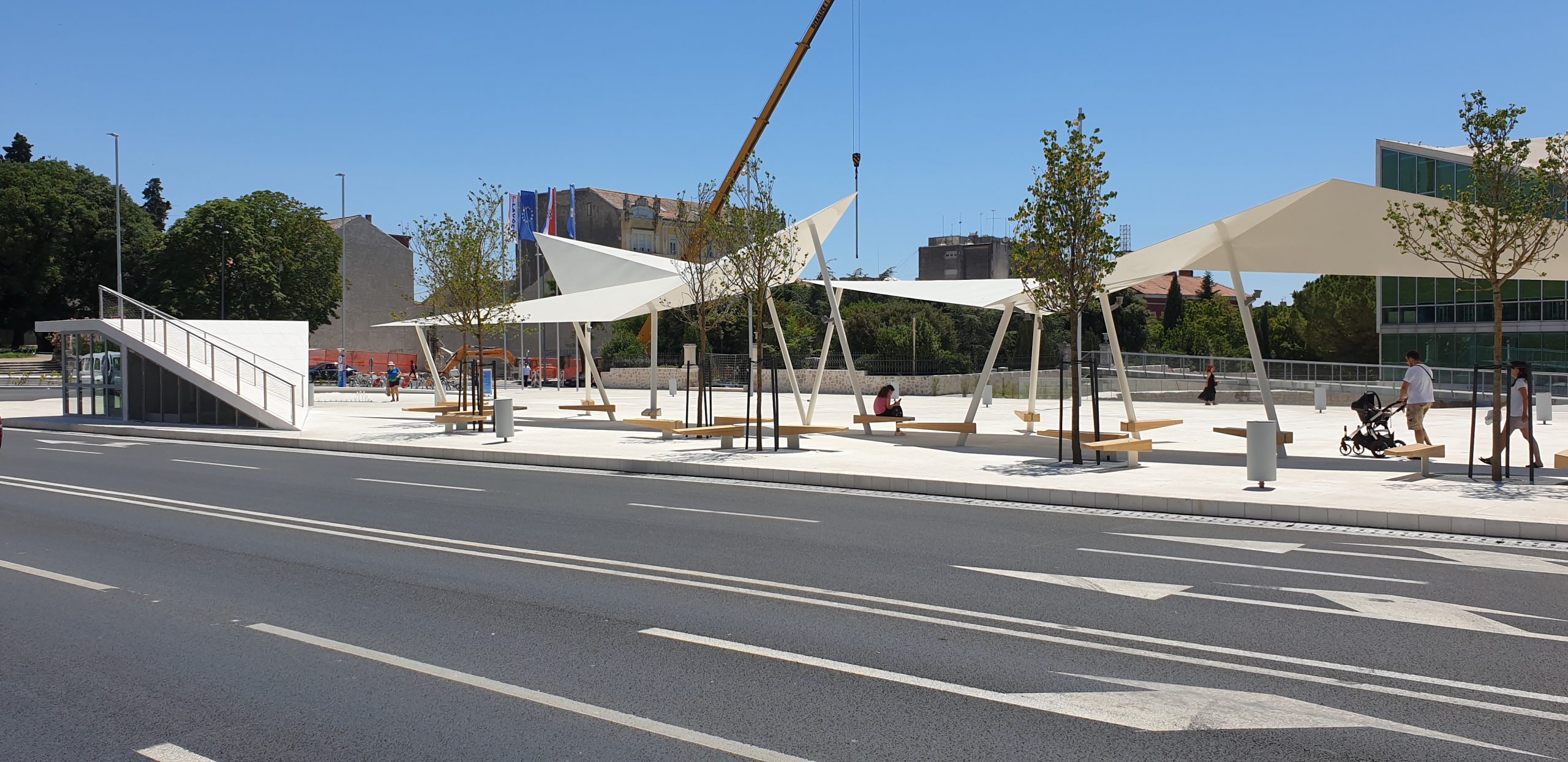 © Ervin Husedžinović / Eccos-inzenjering
© Ervin Husedžinović / Eccos-inzenjering
Homestead on Hartovski vrh, Žumberak, Zagreb County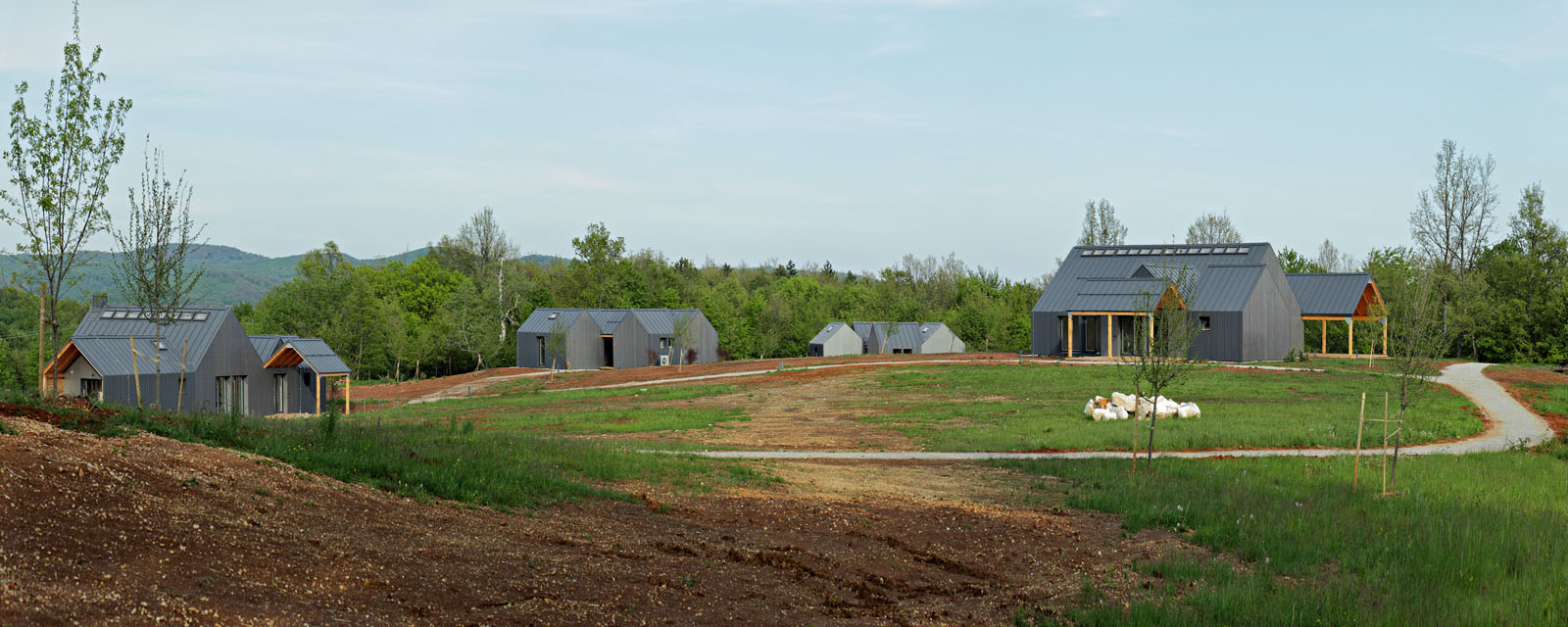
A collection of multi-purpose rural buildings, Homestead and Meditation Centre on Hartovski vrh was commissioned and designed for use by the Buddhist Center Zagreb. Their aim was to relocate activities such as chan, yoga, meditation, healthy living and teaching to a peaceful retreat outside of the city. Architects Branimir Rajčić and Mariela Žinić began the project in 2015, with the completed site arriving in 2019. Modern building materials are used, but not so the striking collection seems out of place within a partially agricultural setting. The set of buildings includes a residential dwelling and a larger hall for meetings and activities, both of which use large windows to allow the light and nature to flood in. © Robert Leš
© Robert Leš
Square of Traditional Crafts, Varaždin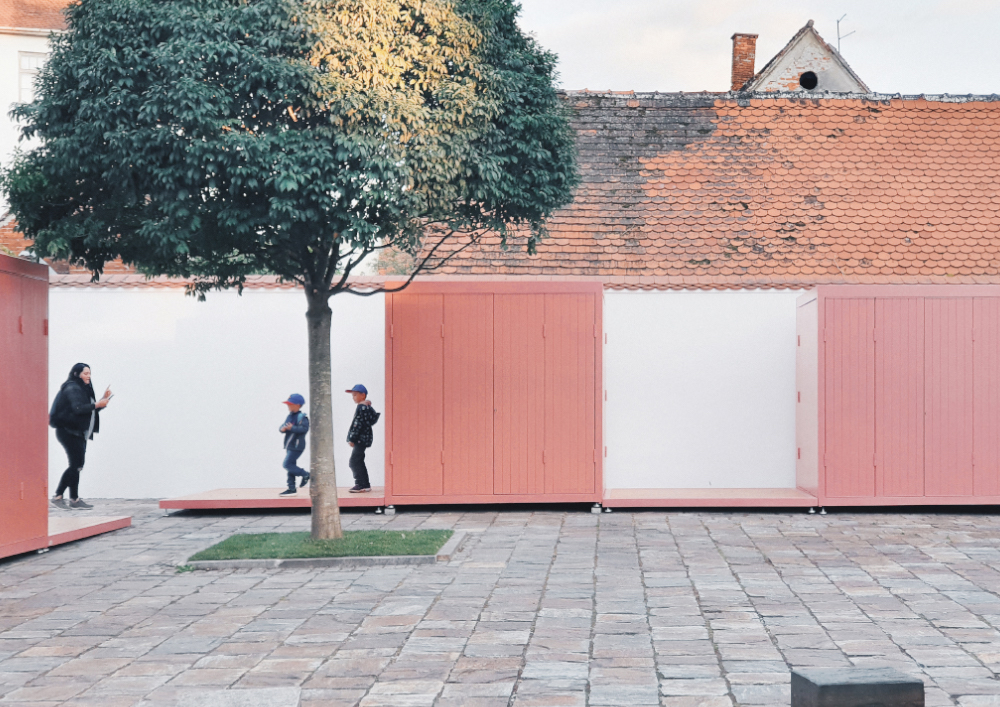
A tricky task was given to architects Studio Konntra – how to enliven and modernise a traditional old square in the centre of one of Europe's best-preserved Baroque Old Towns. They did this by constructing transportable kiosks to house small outlets for local artists and craftsmen that cater to visiting tourists who come to the square. When occupied during the day, the plain wooden interiors allows the crafts to take centre stage. But, after closing time, the outsides of the wooden doors are brightly coloured and adorned with paintings, a welcoming environment for residents to use at night.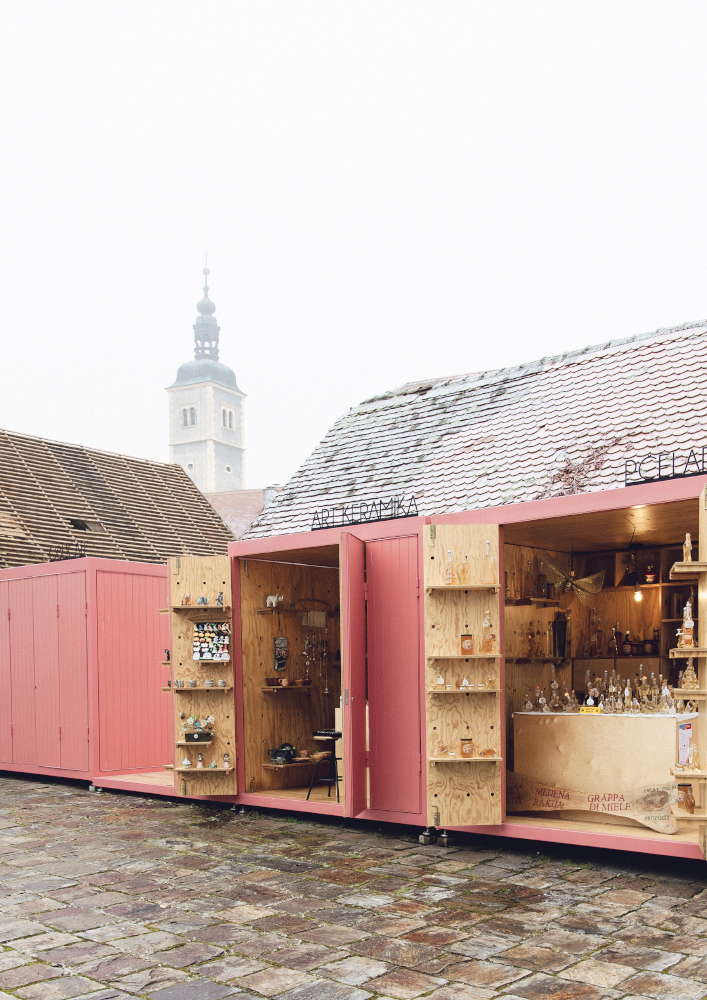 © Studio Konntra
© Studio Konntra
VIDEO: Stunning Aerial Footage of Dolphin Family in Zadar Archipelago
February 1, 2021 – The Adriatic might be too cold for us right now, but conditions are perfect for this dolphin family, spectacularly captured gliding through glacial, undisturbed waters by an overhead drone
The Adriatic might be too cold for us right now, but conditions are perfect for this dolphin family, spectacularly captured gliding through glacial, undisturbed waters by an overhead drone
The footage of the dolphin family was captured spectacularly by keen amateur drone photographer Davor Miljkovic. Davor, who is from Zapresic, usually puts his eye for aesthetics into website design – he works as a PHP website developer for Virtus dizajn in Lanište, Zagreb and as a freelance website developer. But, he is currently taking advantage of working remotely and was able to catch footage of the dolphin family during his off time.
“I live in Zapresic but my grandmother is from island Rava, near Zadar,” Davor told TCN on 1st February 2021, two days after he posted the video of the dolphin family to his Youtube channel. “So, we have a house here by the sea. My fiance and I spend part of the winter here and we are here all summer too.”
The Zadar archipelago (in Croatian Zadarski arhipelag) is an incredibly picturesque group of islands off the coast of the city of Zadar. In addition to island Rava, off which Davor saw the dolphin family, the archipelago also consists of the islands Dugi Otok, Galešnjak, Iž, Lavdara, Ošljak, Pašman, Rivanj, Sestrunj, Tun Veli, Ugljan, Vir, Vrgada, Zečevo and Zverinac.
The beautiful stretch of islands is usually very popular with summertime visitors. It would seem that it's also popular in wintertime with visitors who live in the sea. And, of course, people like Davor who are lucky enough to catch sight of them.
For the latest travel info, bookmark our main travel info article, which is updated daily.
Read the Croatian Travel Update in your language - now available in 24 languages
Zadar Region Island Adventure: 10 Tourist Boards Merged Into New Tourist Brand
January 9, 2021 – For common tourist improvement, ten tourist boards of the Zadar archipelago have united into a unique tourist brand called Zadar Region Island Adventure.
In order to better promote themselves on the market, tourist boards from Sali, Kali, Preko, Kukuljica, Tkon, Pašman, Ugljan, Božava, Silba, and the City of Zadar joined forces. Thus, Zadar Region Island Adventure was born, gathering ten tourist boards of the Zadar archipelago islands. The City of Zadar has signed for Brgulje, Ist, Mali Iž, Molat, Olib, Premuda, Rava, Zapuntel, and all other small towns are under the administration of the City of Zadar.
Uniform and sustainable development
This cooperation's basis is the Law on Tourist Boards and the Promotion of Croatian Tourism. Within this law, the agreements on tourist board associations can be concluded in a project or formal form.
"We have teamed up as a project, which means that each tourist board still has its independence and works for themselves, but when it comes to projects for joint tourist boards, then we stand together as one tourist board named Zadar Region Island Adventure," explains Jure Brižić, Mayor of Preko Municipality for Zadarski list.
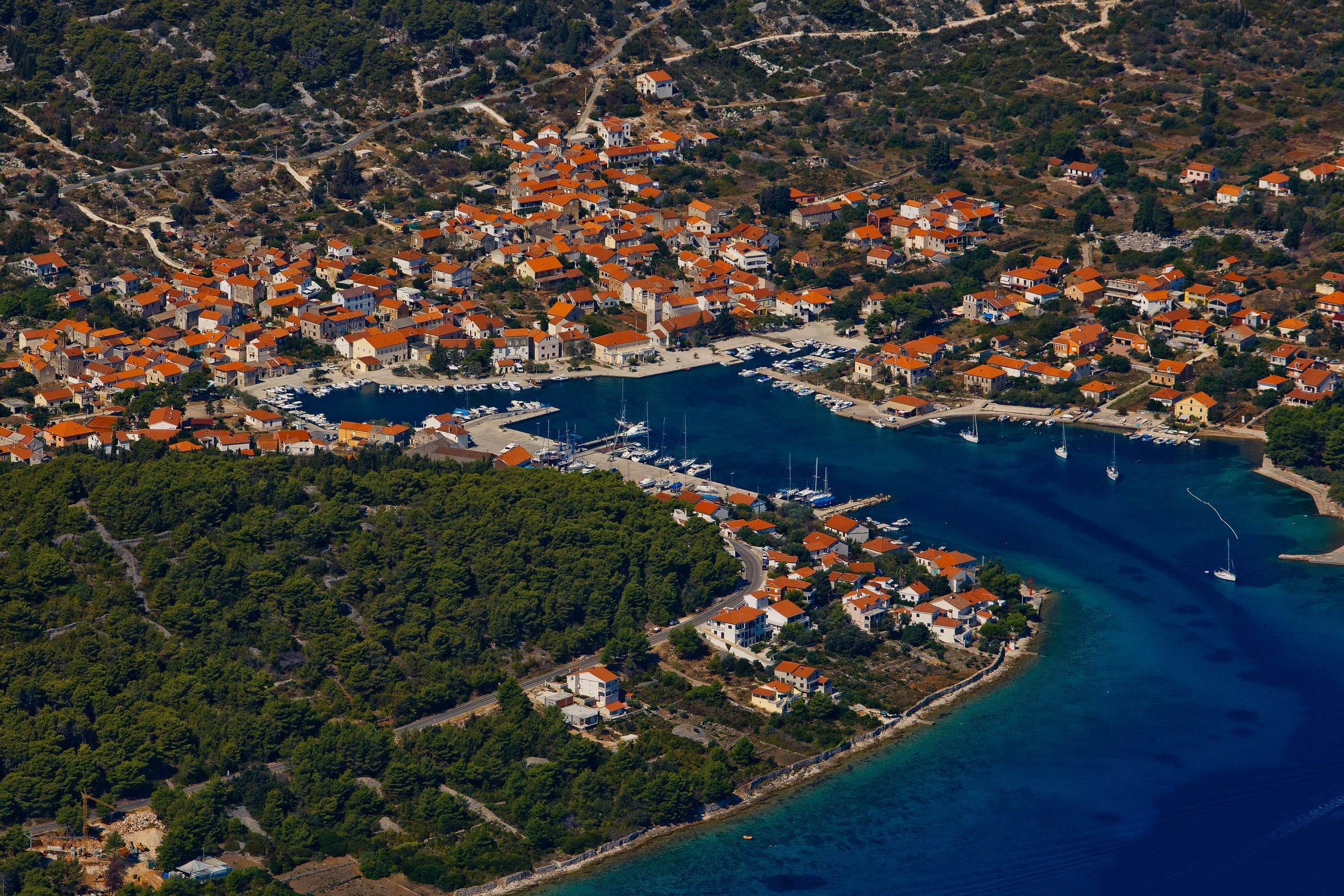
Island of Iž in the Zadar archipelago / Copyright Romulić and Stojčić
On December 16, the Ministry of Tourism and Sports issued a consent to unite tourist boards. Through the association, tourist boards receive financial resources from the Fund for Associated Tourist Boards, established for that purpose, into which funds from paid tourist taxes and membership fees are poured.
In the Zadar Region Island Adventure project, the most important thing, says Brižić, is the uniform and sustainable development of islands and tourism on the entire Zadar archipelago.
"So far, we have had a situation where each tourist board has made its own brochures and told its own story. Practically, we all have one story, the same problems, but also the same advantages and the same products. It was unthinkable for us to go to the fairs alone, and we were unrecognizable. Namely, when you tell tourists that you are from Preko or Kali municipalities, it means nothing for them. When you tell them that you are from the island of Ugljan, it already means something. Now that we will present ourselves as the Zadar region, it will come in convenient for promotion," says Brižić.
Nautical, gastronomic, and cultural tourism development
According to the Agreement, uniting Zadar archipelago tourist boards aims to jointly promote the entire area and develop joint projects and programs. Besides, their goal is to achieve better results in tenders for EU projects.
Ivan Košta, director of TZO Preko, points out that they saw their chance in the association and launched a Zadar Region Islands Adventure initiative.
Dugi otok in the Zadar archipelago / Copyright Romulić and Stojčić
"Our goal is to highlight our potentials, i.e., recognizable products in joint tourist branding, marketing, and market entry. The entire Zadar archipelago and part of the Kornati islands are included in this project. The Zadar archipelago is large, diverse, and much more accessible than other islands. We think that together we could make a better brand and tourist product and help our region's betterment," says Košta for HRturizam.
United, they have almost 30,000 inhabitants, which allows them to participate in larger projects, attracting more money. In this way, they will create a unique tourism product that will make them more recognizable globally.
The most important of the numerous activities is the development of nautical, gastronomic, and cultural tourism. Also, improvements to transport connections are planned, such as hop-on, hop-off ships, as well as making joint maps with points of interest – "Island cruise & bike routes" and "Discover local island products."
Besides, existing projects will be implemented, such as "From the anchorage to the lookout," during which certain lookouts will be arranged on the islands.
For the latest travel info, bookmark our main travel info article, which is updated daily.
Read the Croatian Travel Update in your language - now available in 24 languages.
4.7 Magnitude Earthquake in Zadar Felt Across Dalmatia
November 1, 2020 – Northern Dalmatia has been hit with a strong tremor today, the earthquake in Zadar was estimated to have measured 4.7 on the Richter scale
A strong earthquake has this afternoon shaken the residents of north Dalmatia. The earthquake in Zadar occurred at 2.15 pm on Sunday 1 November. The epicentre of the earthquake in Zadar was 16 kilometres to the northwest of Posedarje municipality and occurred at a depth of 10 kilometers.
The earthquake in Zadar was felt across much of Dalmatia. Residents of Zadar County would have been settling down to Sunday lunch or preparing to visit local cemeteries on All Saints Day as the strong tremor struck. The duration of the earthquake was approximately four to five seconds.
Index media reported their readers had felt the tremor on the islands of Pag, Prvić and Iž, in the city of Split and even in Bihać in Bosnia and Hercegovina. The European-Mediterranean Seismological Centre were contacted by people from Gospić, Sveti Rok, Biograd na Moru, Knin, Solin, Omiš, and even Karlovac who felt the earthquake.
Today's Zadar earthquake is the latest in a series of hundreds of instances of seismic activity that have taken place in Croatia during 2020. The largest earthquake to have shaken the country in over one hundred years took place at 6:25 am on 22 March 2020. The epicentre of that earthquake was around seven kilometres tp the north-east of the centre of Zagreb and the earthquake was measured at a magnitude of 5.5. The Croatian capital and some of its surrounding villages are still dealing with the aftermath.
For the latest travel info, bookmark our main travel info article, which is updated daily.
Read the Croatian Travel Update in your language - now available in 24 languages.
Beautiful 3D Maps of Croatia, its Islands and the Adriatic
Sunday, 6 September 2020 – Fafarikula from Zadar creates beautiful bespoke 3D Maps of Croatia, its islands, the Adriatic, and the world. Made from wood, they're the perfect souvenir to take from the coast
A stay on the Croatian coast is full of one-off experiences. Each island is unique, every wine and sunset is different. The same cannot be said for some of the mass-produced souvenirs available.
But, one small Zadar company has created a wonderful alternative to plastic keyrings and ill-fitting slogan t-shirts. Fafarikula makes beautiful 3D maps of Croatia, its islands, and the Adriatic. Made from wood and available to order, they can hang in your home and remind you every day of your trip to the Croatian sea.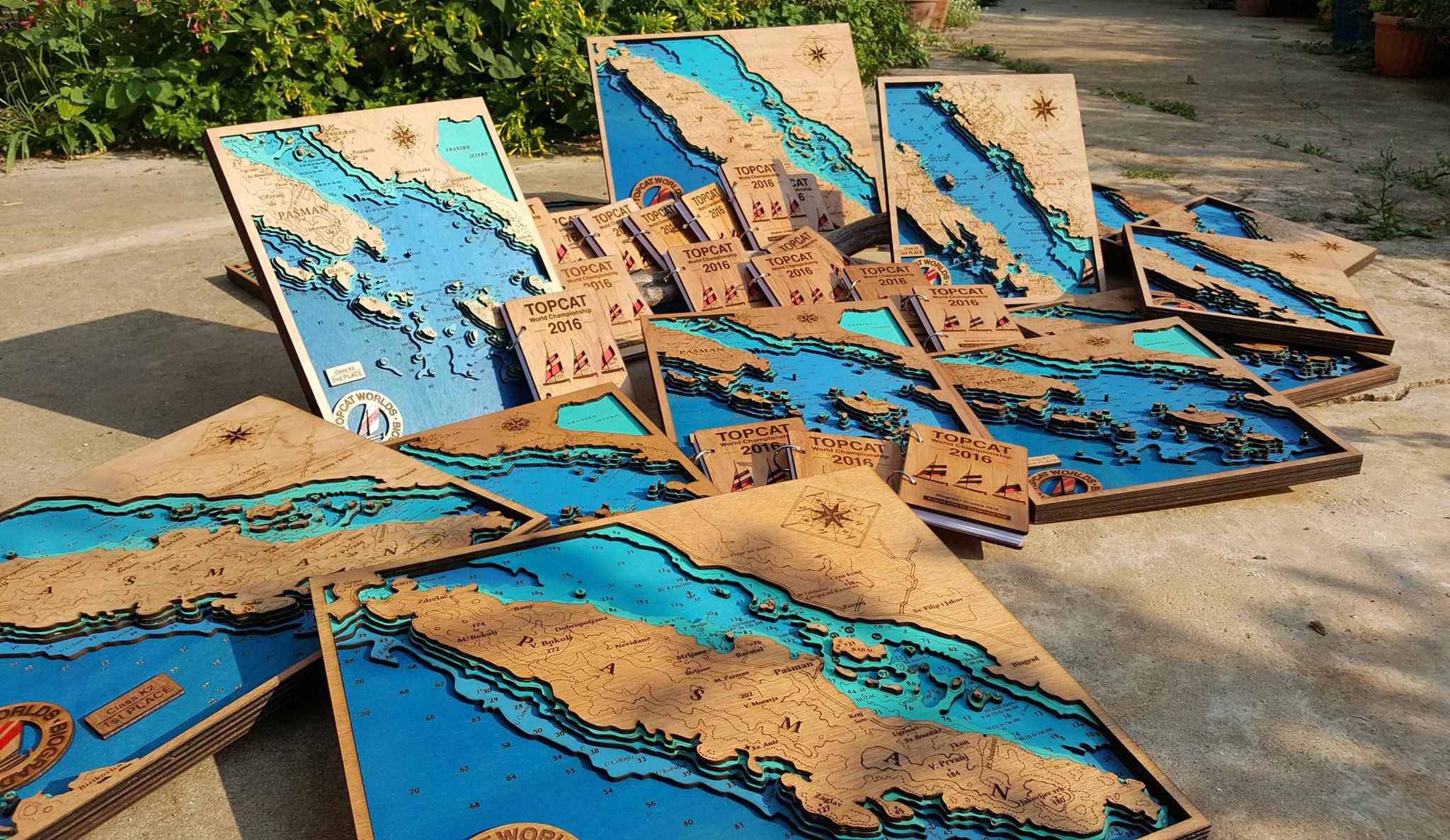
The 3D maps of Croatia are made using a laser cutter and depict an accurate representation of shorelines and sea depths. Five layers of wood are used in their construction, then fixed atop one another.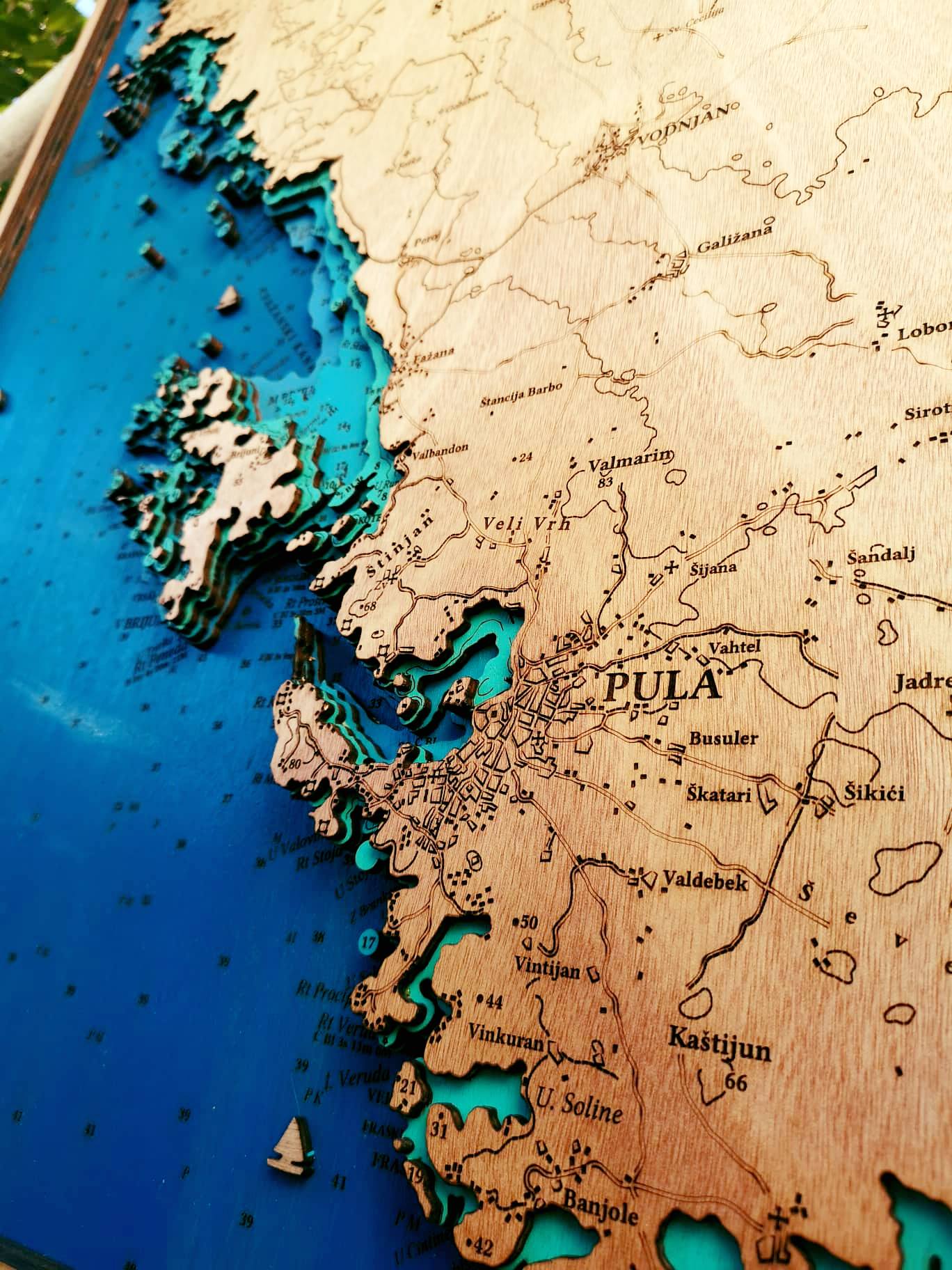
Ida Šimunov and Marko Rihelj are the couple behind the 3D maps of Croatia. They founded their quality souvenir company, Fafarikula five years ago. They have a range of maps already available, but if you've fallen in love with one particular destination, they can make a bespoke map just for you. In addition to the 3D maps of Croatia, the company has recently produced maps of the Mediterranean and the whole world. They also make wood-bound notebooks, pendants, and a huge variety of fridge magnets.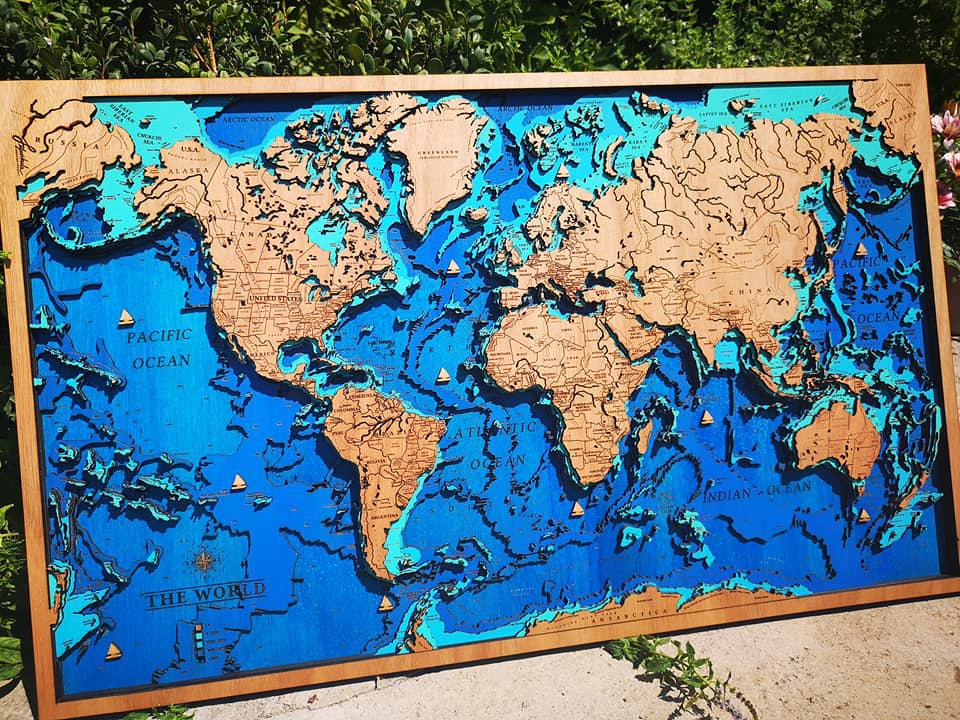
Though a relatively new option for visitors, these 3D maps of Croatia come from a long line of map-making. Maps are one of the oldest things that humans attempted to paint. The earliest archaeological maps include cave paintings and ancient maps of Babylon, Greece, China, and India. However, the earliest known maps are of the stars, not the earth. Images dating to 14,500 BC found on the walls of the Lascaux caves in Dordogne, southwestern France map out part of the night sky, including three stars – Vega, Deneb, and Altair - as well as the Pleiades star cluster. The Cave of El Castillo in Spain holds a wall map dating from 12,000 BC of the Corona Borealis constellation.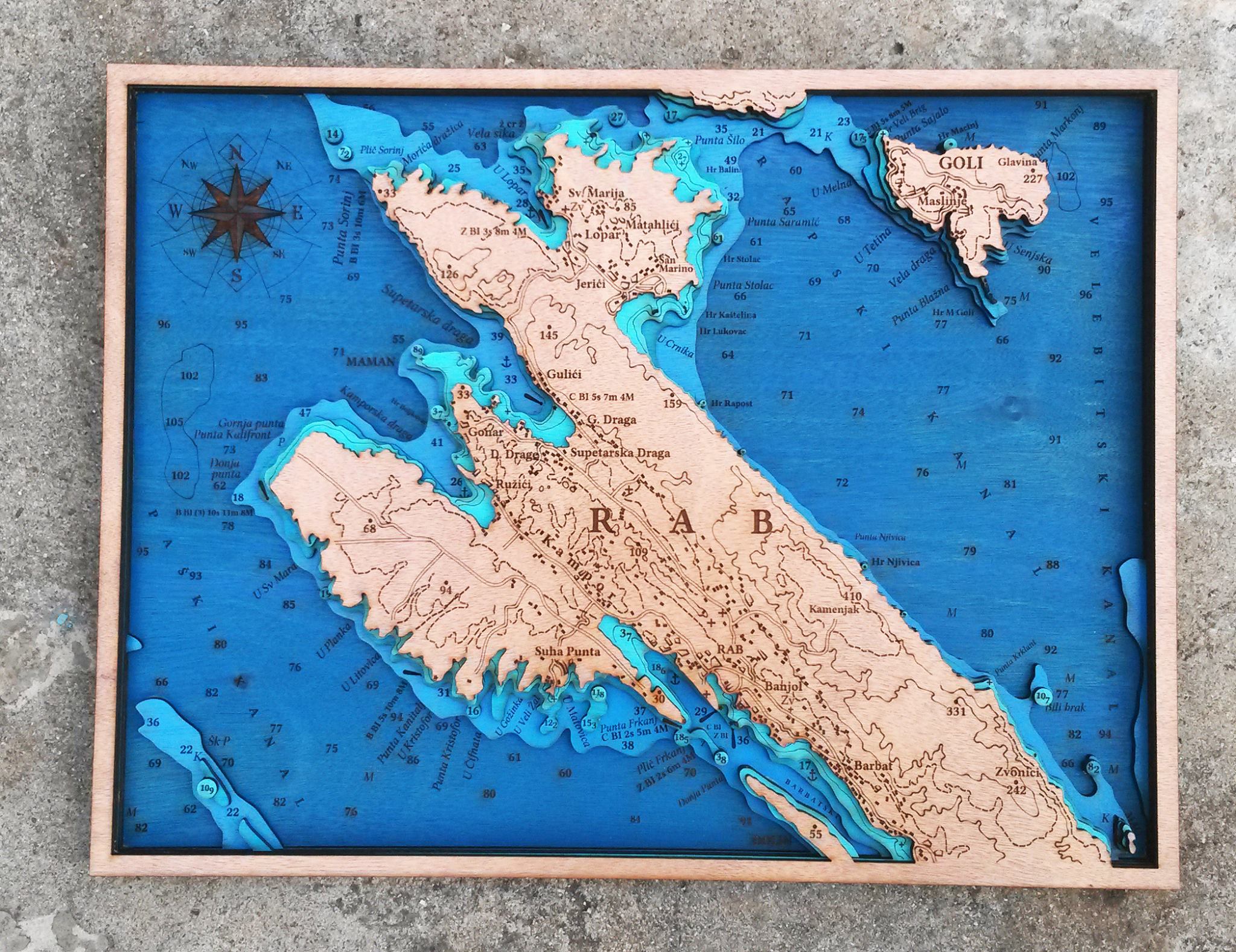
A map-like representation of a mountain, river, valleys, and routes around Pavlov in the Czech Republic, carved on the tusk of a woolly mammoth, has been dated to 25,000 BC, making it possibly the oldest known map of all time. The word map comes from the medieval Latin 'Mappa mundi' with mappa meaning napkin or cloth and mundi meaning the world.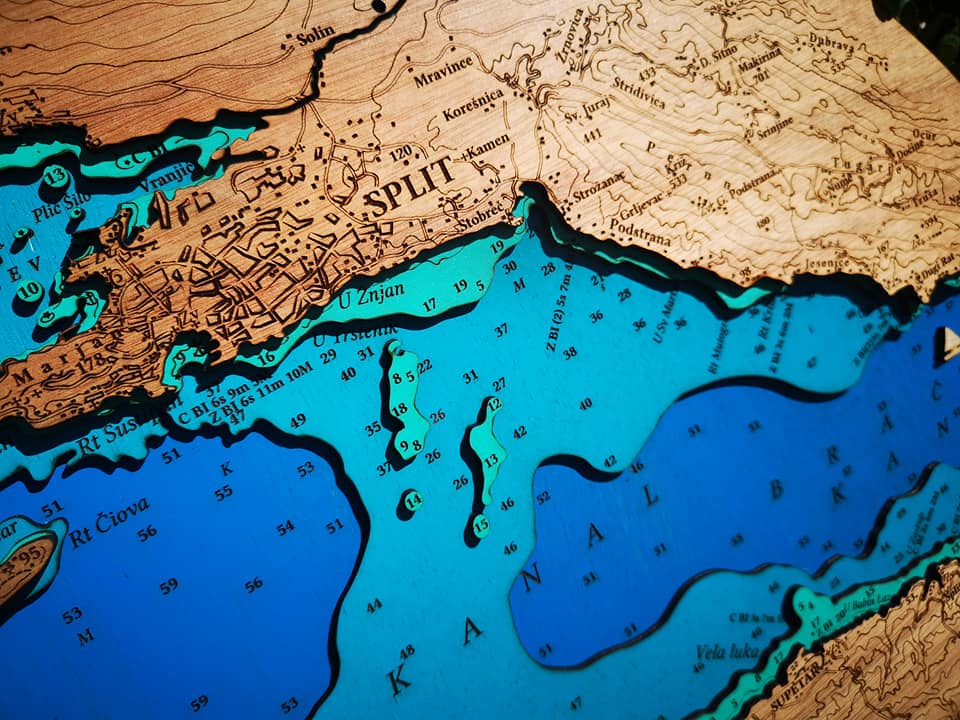
All photos © Fafarikula
For the latest travel info, bookmark our main travel info article, which is updated daily.
Read the Croatian Travel Update in your language - now available in 24 languages
PHOTOS: Secluded And Beautiful - Vir Island A Safe Choice For Late Summer
August 23, 2020 – Croatian Tourism minister Nikolina Brnjac's recent visit to Vir island highlighted it's safe epidemiological record. Pictures show what to expect from a peaceful and secluded Vir.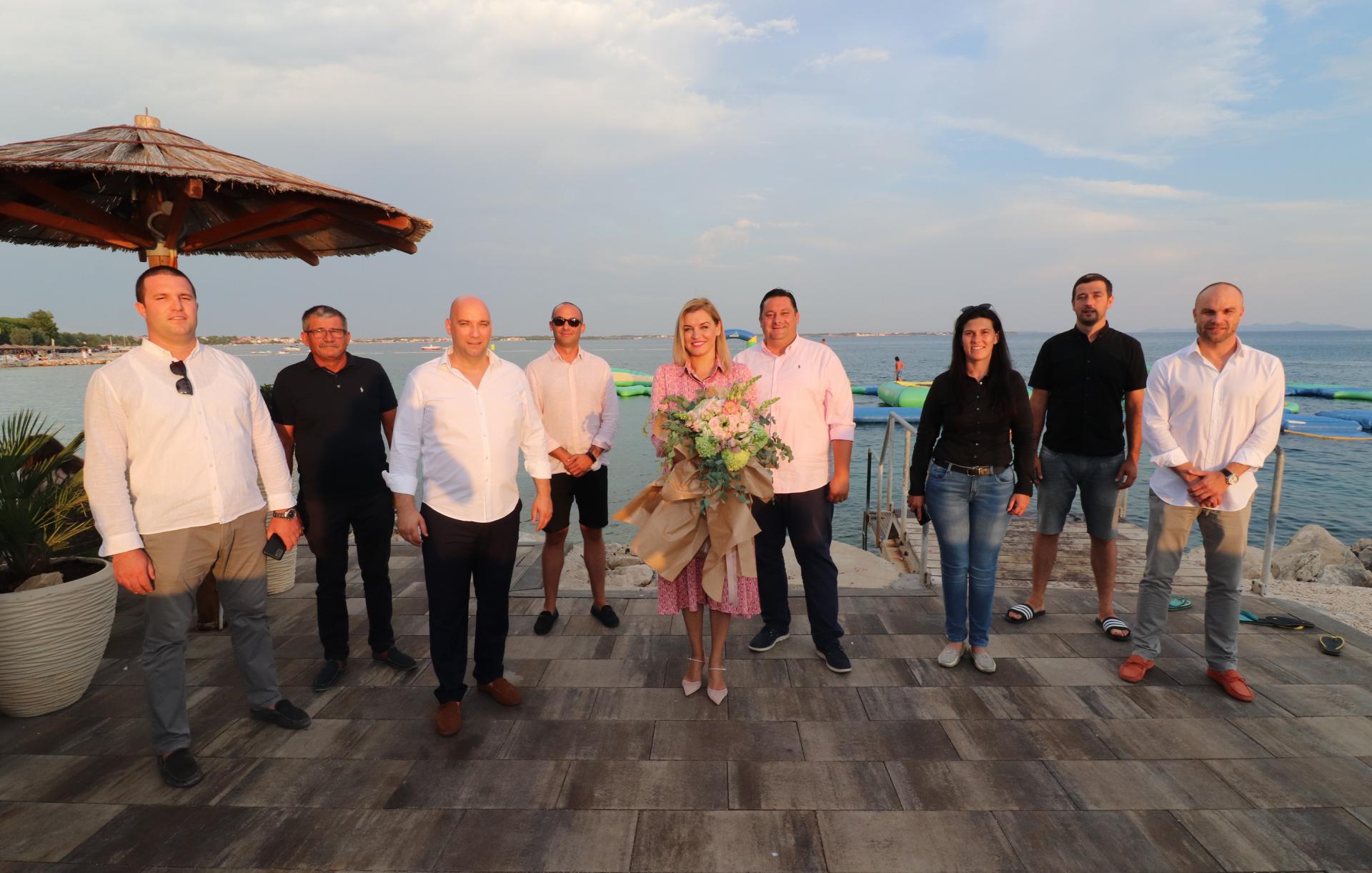
Croatian Minister for Tourism, Mrs. Nikolina Brnjac, was welcomed on Vir island by the Mayor of Vir Kristijan Kapović, President of the Municipal Council of Vir, Rajko Radović, Deputy Mayor Antonio Vučetić, Director of the Vir Tourist Board Srđan Liverić, Director of the islanders' own tourism company Vir Turizam Kristina Perić, Head of Vir Turizam Mate Čulina, director of Tourist Board of the City of Zadar Mario Paleka © Virski List
Mrs. Nikolina Brnjac was not the first Croatian Tourism Minister to visit Vir island, located north-west of Zadar. Her three most-recent predecessors had also taken the short journey via bridge from Privlaka and Nin to reach the nevertheless peaceful and secluded island. However, Brnjac was the first to do so in August, at the peak of the tourist season. And, she had good reason for doing so.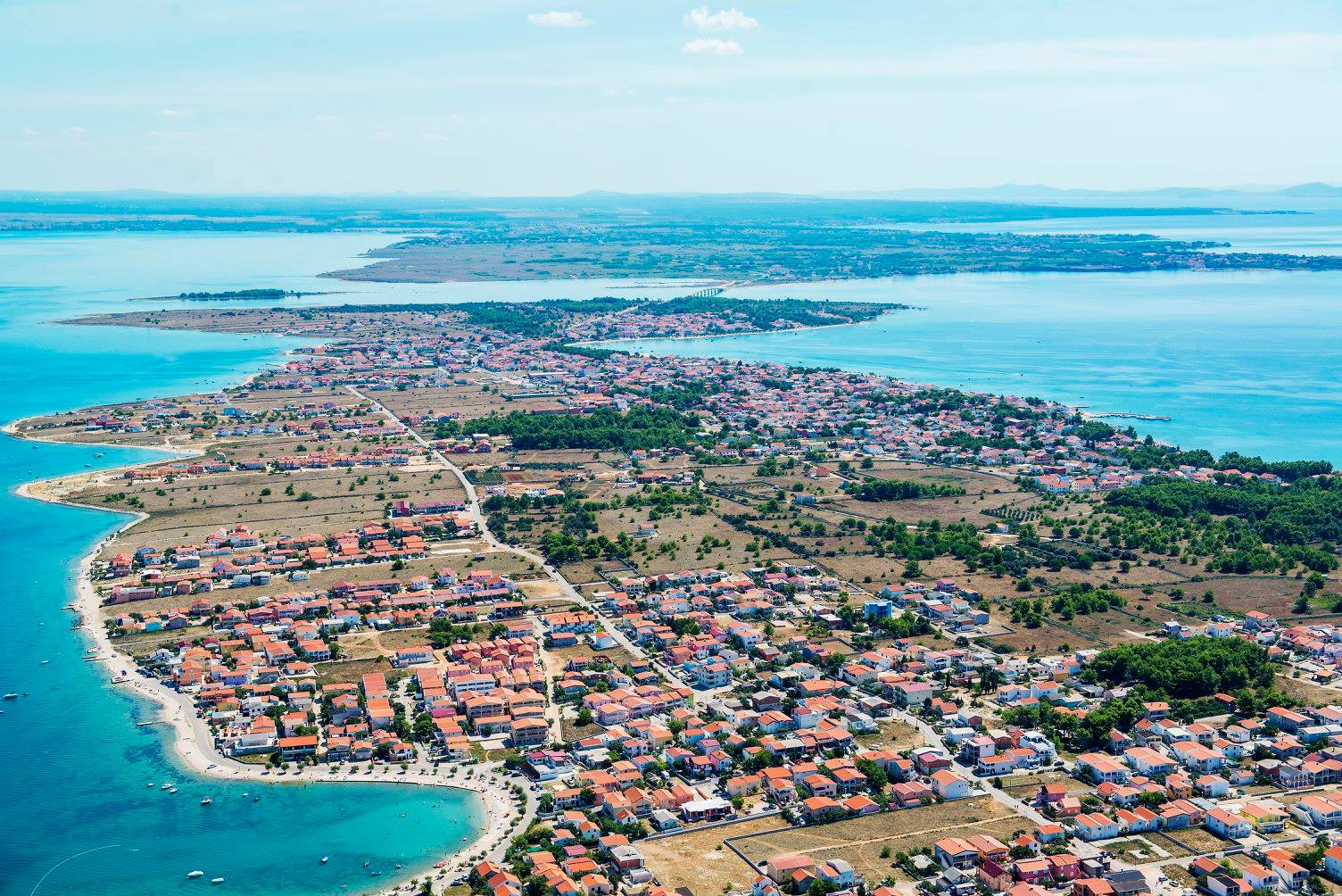
Though connected to the mainland by a short road bridge, Vir island manages to retain a peaceful seclusion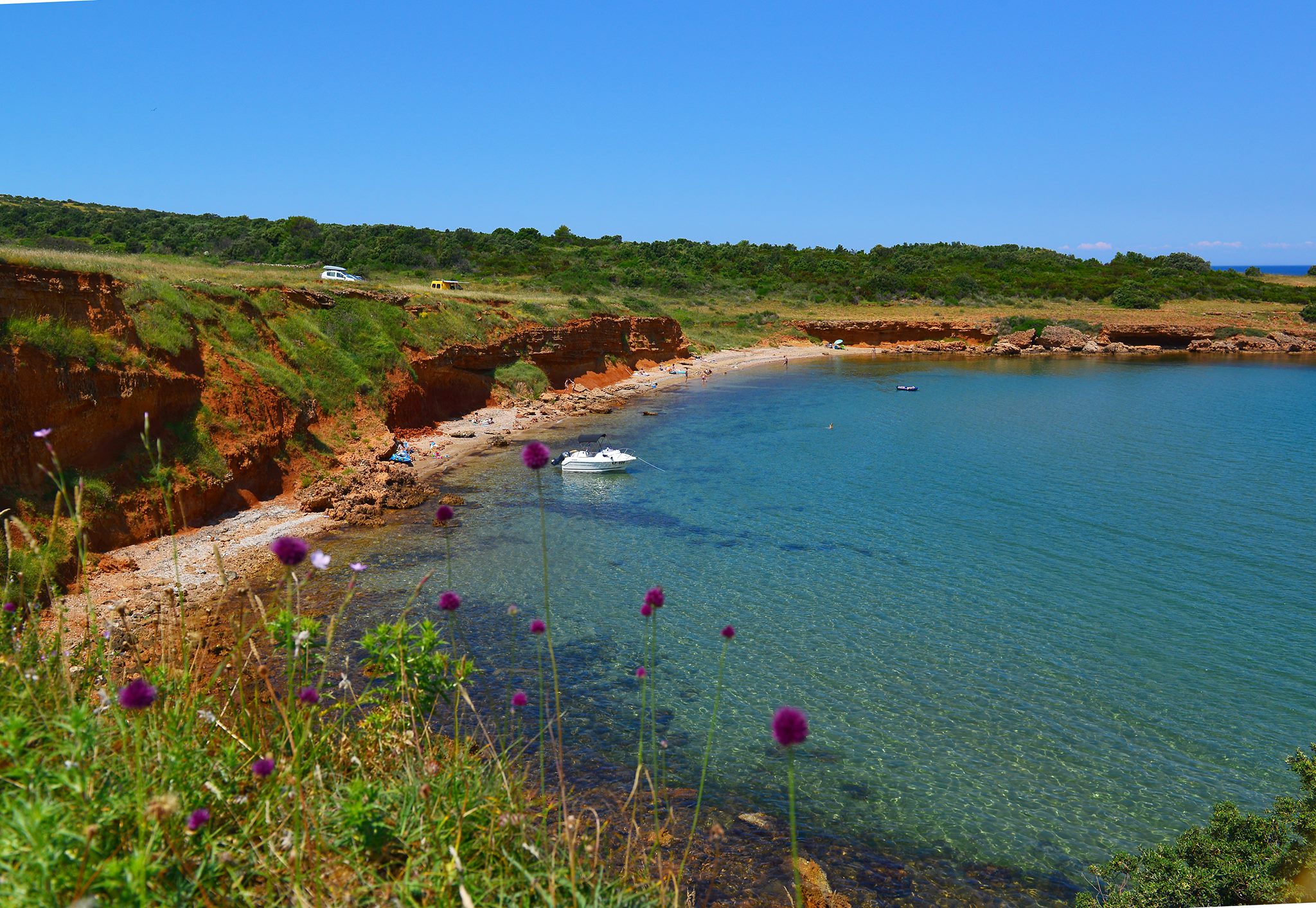
Vir island has plenty of beaches to choose from and lots of space © Anton Unković / Tourist Board Municipality Vir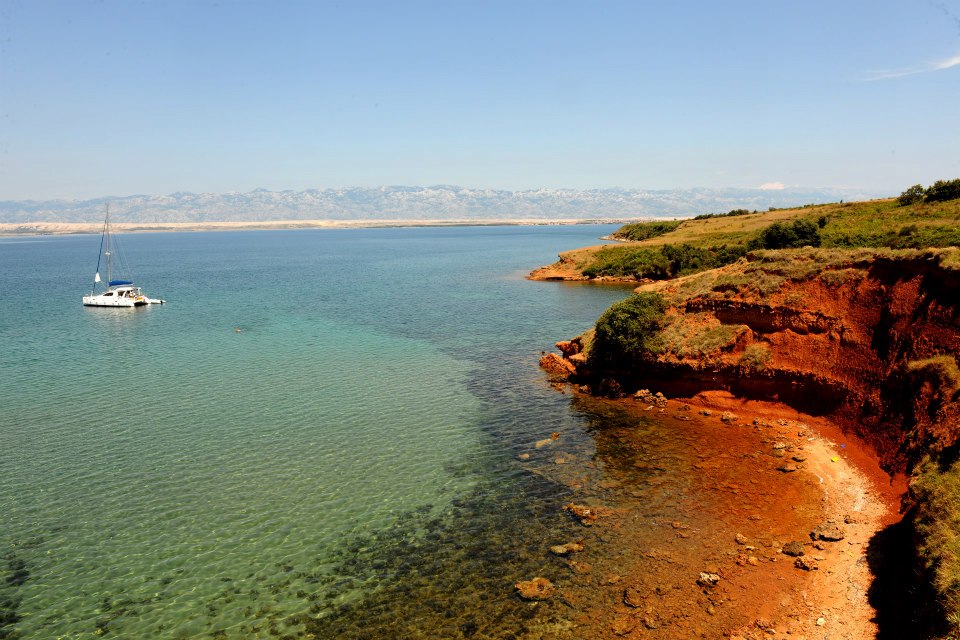
Some of Vir island's beaches are remote, but easily accessible by boat © Zvonko Kucelin / Tourist Board Municipality Vir
As reported in TCN earlier this season, Vir island is one of 2020's success stories. In a challenging year for tourism, Vir island had bucked all trends and actually improved on last year's visitor numbers. It was the first Croatian destination of 2020 to reach one million overnight stays. The island is keenly observing epidemiological guidelines, has positioned itself as a safe place to visit and has reaped the rewards.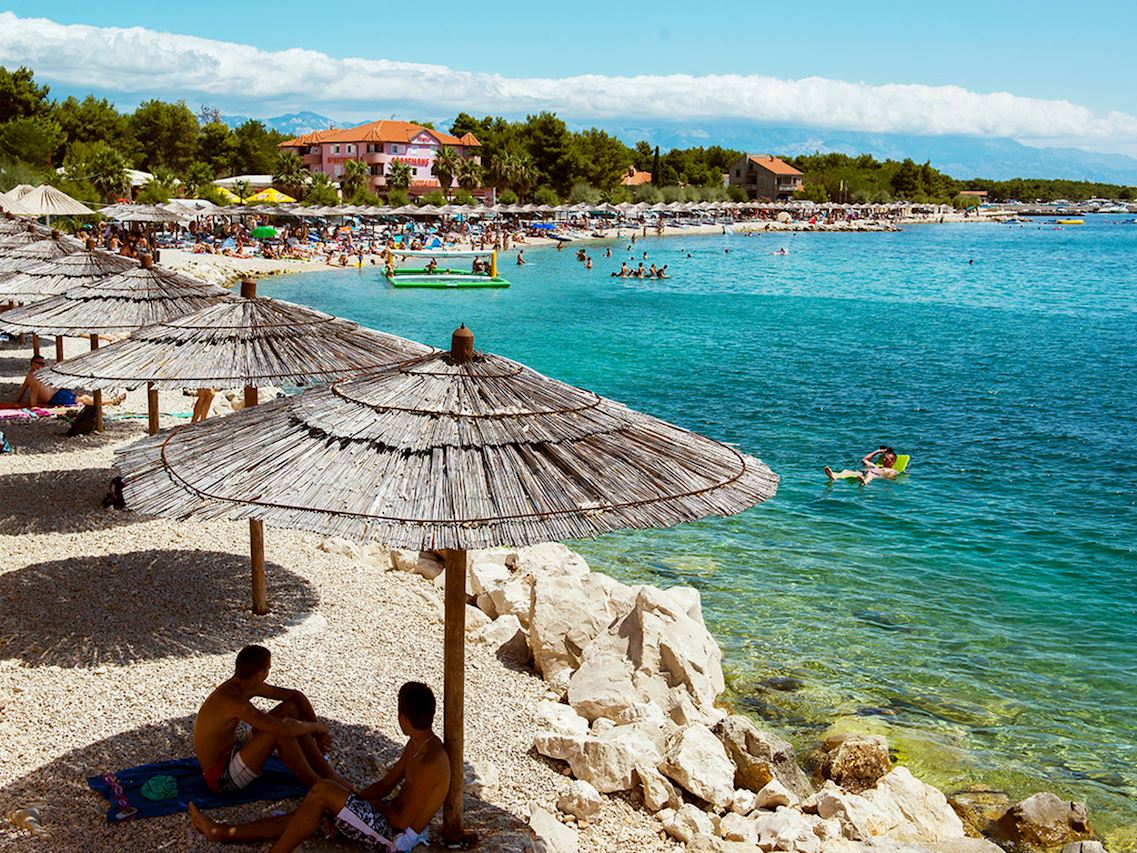
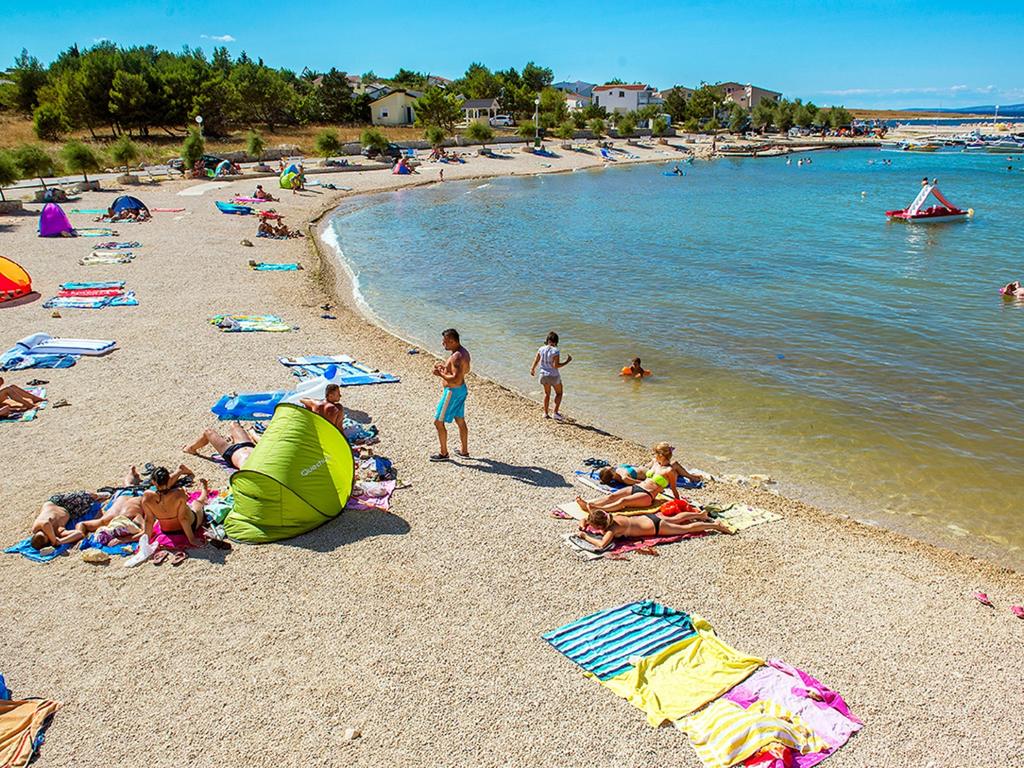
Even on Vir island's more popular beaches, there's still lots of room for everyone © Vir Turizam
With over a month left to tour its beautiful, spacious beaches and clear, turquoise seas, these images give an idea of what you can expect from a visit to Vir.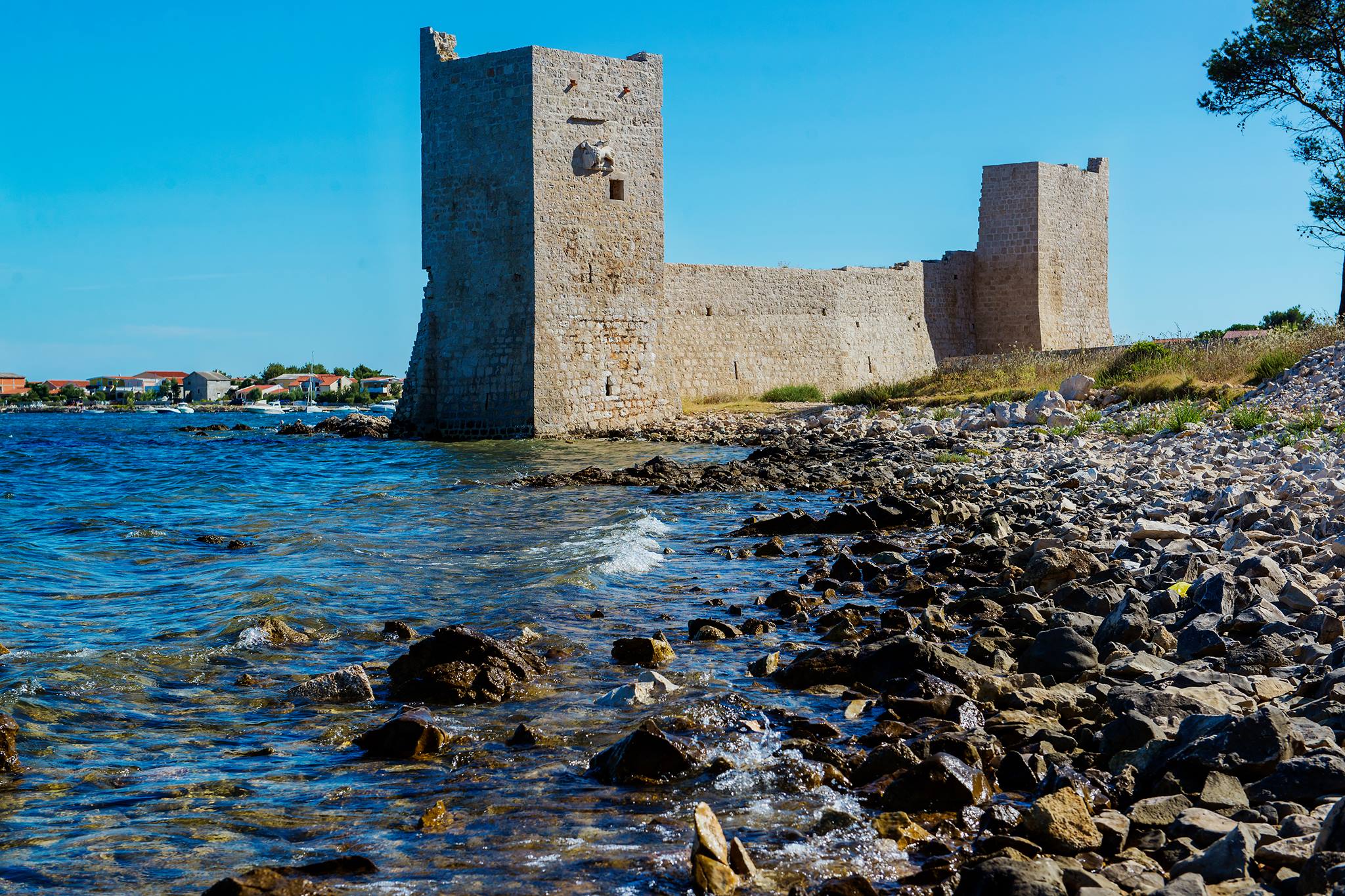
Venetian fortress Kaštelina is one of the island's most significant landmarks © Tourist Board Municipality Vir 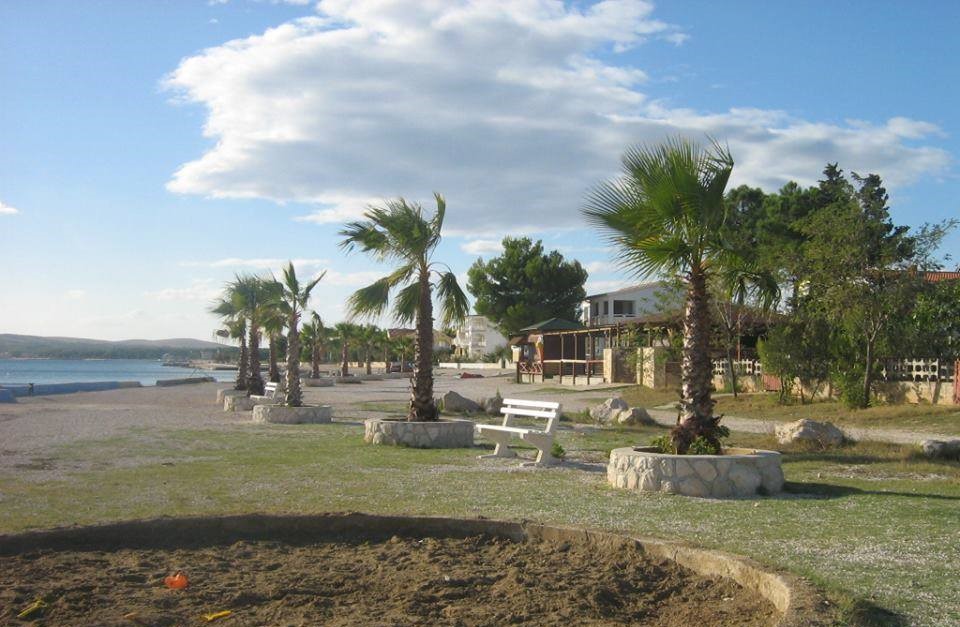
Vir island is perfect for walking and exploring. Often, you'll find yourself alone on its many kilometres of shoreline © Tourist Board Municipality Vir
For the latest travel info, bookmark our main travel info article, which is updated daily.
Read the Croatian Travel Update in your language - now available in 24 languages
Join the Total Croatia Travel INFO Viber community.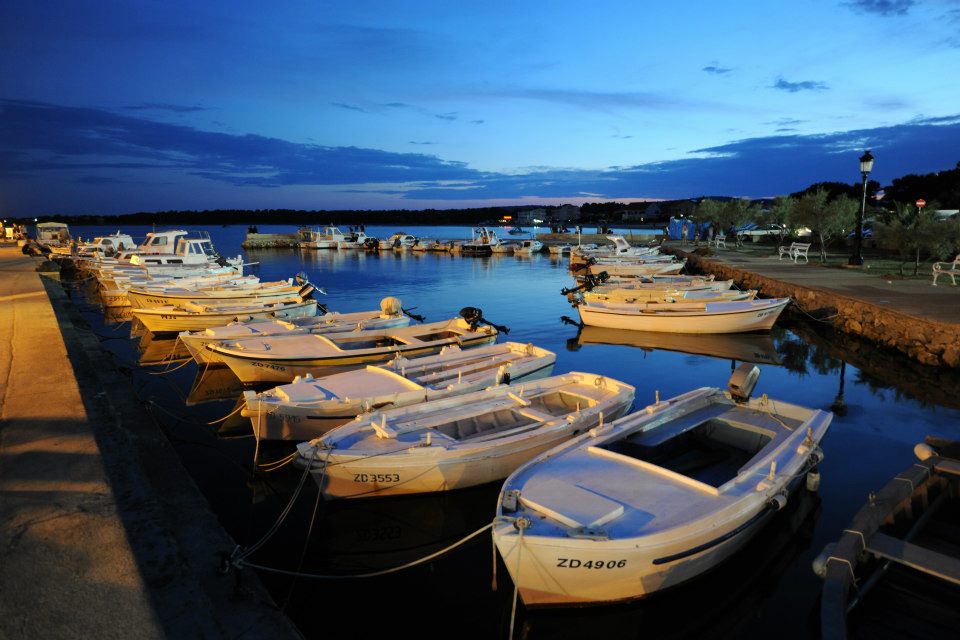
Boats in the harbour on Vir island at sunset © Zvonko Kucelin / Tourist Board Municipality Vir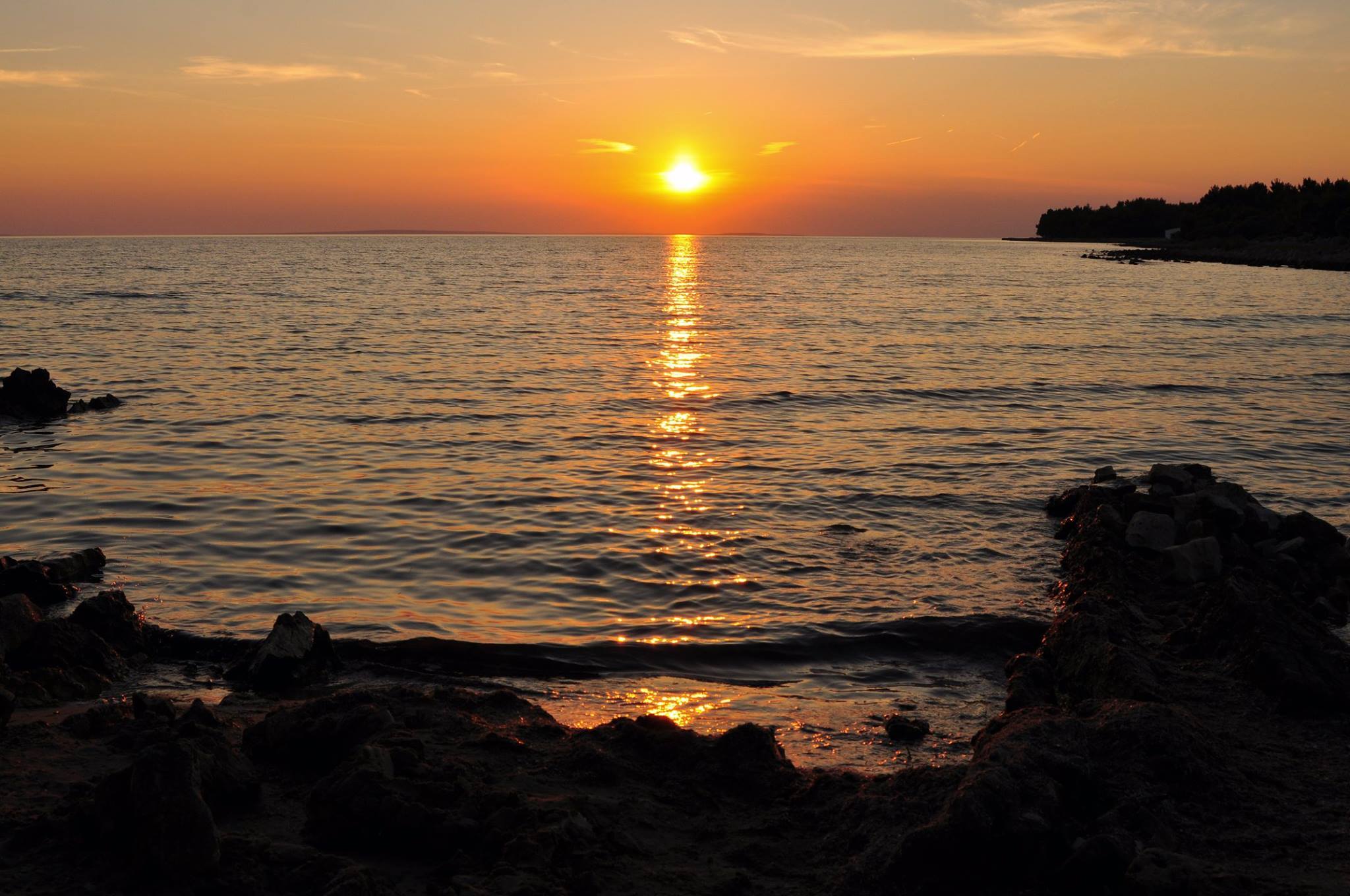
Sunset over the Adriatic, as seen from Vir island © Sanja Grgić Ćurić / Tourist Board Municipality Vir
Meet HGSS The Croatian Mountain Rescue Service
August 19, 2020 – All weather, all terrain, all year round – meet HGSS The Croatian Mountain Rescue Service, amazing volunteers who will never let you down
They're never far from the news. For the last two weeks, members of HGSS The Croatian Mountain Rescue Service have yet again been on the TV news every night. They're leading the search for a summertime visitor, a Polish hiker missing on Biokovo mountain.
But, watch again this winter and, for sure, they'll be in the headlines once more. Whether, they're scaling mountain ranges in the unbearable heat of high summer, searching underwater caves, flooded rivers or the sea, breaking through wild forest or trudging through metres of snow, they undertake their search and rescue missions over every terrain, in every weather condition, in every month of the year, all across Croatia. And, they all volunteers.
Marc Rowlands meets the head of service for HGSS The Croatian Mountain Rescue Service and three of its volunteers to find out who they are and what makes them do what they do.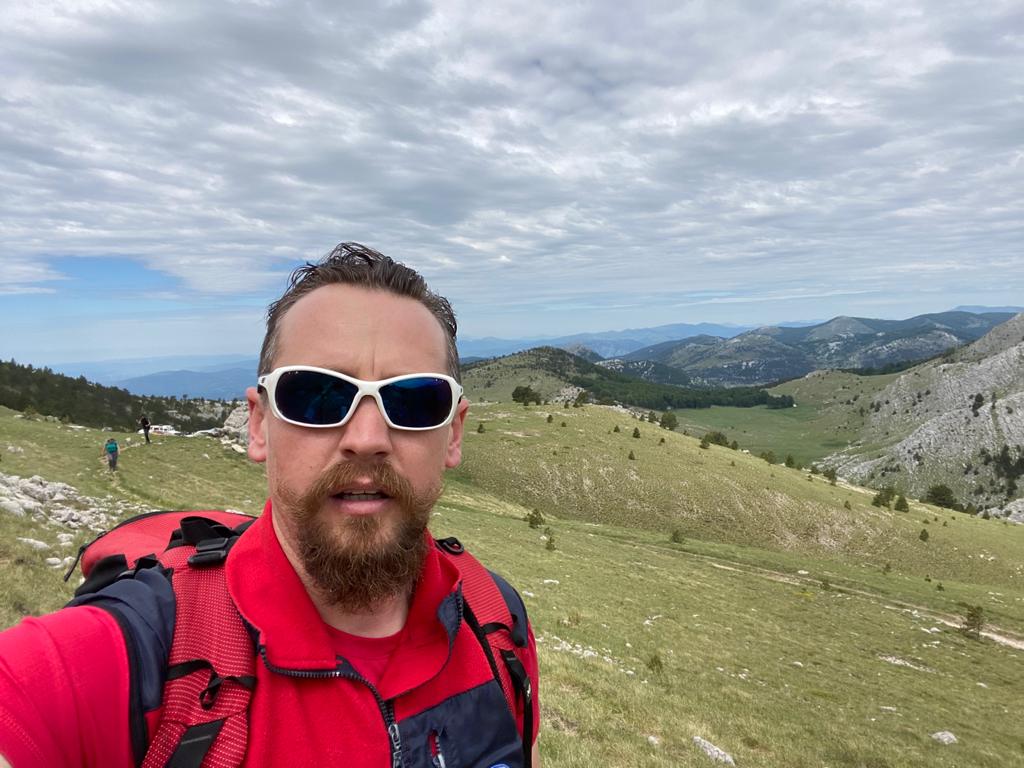
Josip Granić, head of service for HGSS The Croatian Mountain Rescue Service
My name is Josip Granić. I'm the Head Of Service for HGSS The Croatian Mountain Rescue Service. We've had an extremely busy couple of weeks. Being head of service for an organisation like this under such circumstances means you're always on the phone; co-ordinating, talking to outside organisations, members of the press. Communication. It's a 24/7 job, 365 days a year. If people need help, you can't take a holiday. Not at this level of the organisation.
We have around 1000 members. There are 11 paid positions in the main organisation and 25 people we pay to run the administration in each of the teams or stations we have. All of the members who perform the search and rescue are volunteers. We have pilots, surgeons, nurses, students, professors, every part of society.
I'm originally from Kaštela, but my home station is in Karlovac. I've been there for 15 years. I've been Head Of Service for two. Since I assumed the position, I've spent most of my time in the car. I travel all over Croatia.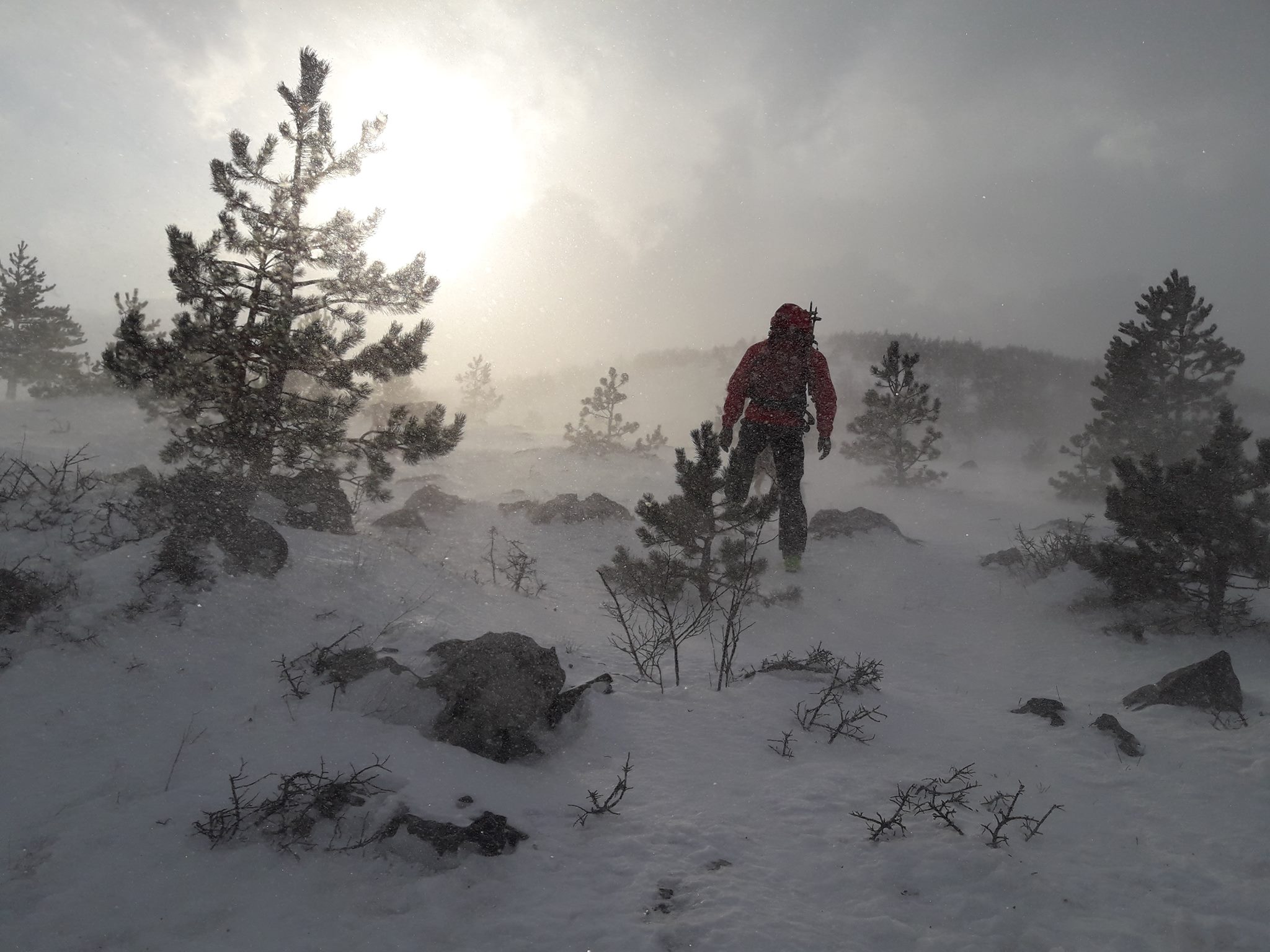
HGSS The Croatian Mountain Rescue Service missions can be hampered by extreme weather conditions © HGSS The Croatian Mountain Rescue Service
To get a certified position as a mountain rescuer in Croatia you all do the same training. It doesn't matter if you come from Slavonia, Dalmatia or Istria, you must have the knowledge and ability to deal with circumstances in any terrain; caves, pits, mountains, on snow, underwater.
Depending on where your station is, the type of call-outs you get could be very different. In Slavonia, 90% are for missing persons - searching forests, rivers, and in floods. We've had a big search on Biokovo mountain for the past 16 days. The stations from Split, Makarska, and Dubrovnik were at first involved, then teams from all over Croatia. It's not the same as Slavonia. The terrain is very different, so you have to be good at a particular set of skills. But, the largest percentage of call-outs is still missing persons. It's 70% of our work nationwide. The other 30% are rescues.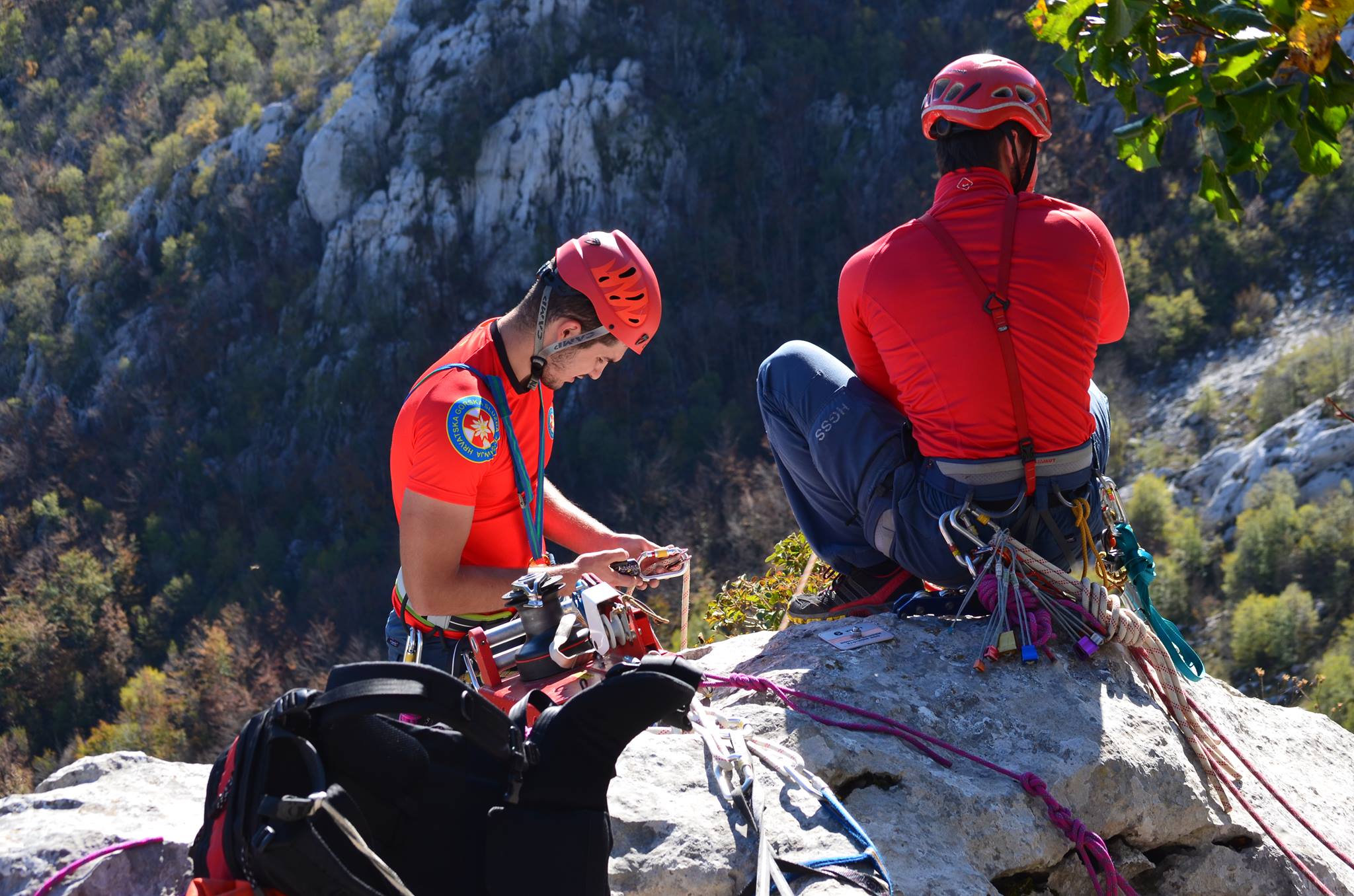
HGSS volunteers are educated to use a wide range of technical equipment. They are trained to operate in all the different kinds of terrain found across Croatia © HGSS The Croatian Mountain Rescue Service
There are usually 800 – 1000 missions a year across the country. We get roughly the same amount of calls in colder months as in warmer months. Only, winter months can be busier. The terrain is more difficult. There are some villages in Croatia – usually where the front line of the fighting was, around Karlovac, Kordun, Lika – and when it snows, it can be almost impossible to reach those places. But, some older people still live there. It can take days to reach them on snowmobiles, then skis, to deliver food or medecine. The other busiest places in winter are the ski resorts - Platak, behind Rijeka, and in Zagreb, on Sljeme. There are teams stationed in those places throughout the snow season.
What's the greatest danger of the job? Almost everything. Nothing in this job is easy. The greatest dangers we face are the same facing those that we rescue - underestimating the environment, nature, the conditions. That's where our training comes in.
In mountain rescue, we separate dangers into subjective, objective and technical. Subjective is the stuff you're guilty of - lack of preparedness, knowledge or equipment. Objective dangers are the ones you can't control, like sudden changes in weather, or avalanche. If you're sensible and informed, there should be no objective danger.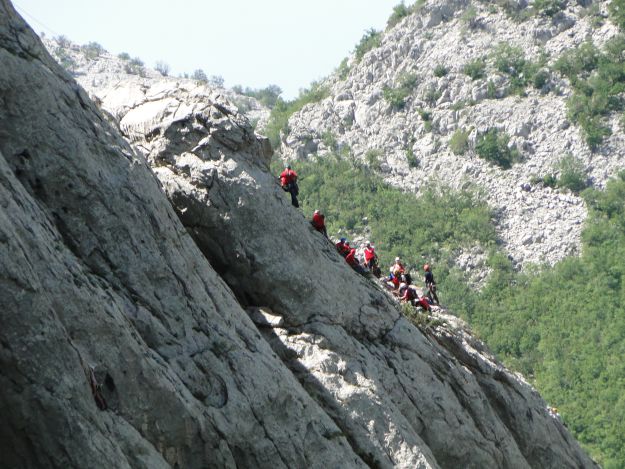
HGSS on a mission, clinging to a steep incline in Paklenica © HGSS The Croatian Mountain Rescue Service "People need to be aware at all times on the mountains. By the time most people think they may be in trouble, they've usually been in trouble for five or ten minutes already" Josip Granić.
80 – 85% of the people we rescue are Croatian. Only 15 – 20% are guests. People from Czech Republic, Slovakia, Poland, (Austria and Slovenia too) tend to enjoy nature more. They like hiking. That's the reason there are typically more rescues for those nationalities than there are for British, Belgian, French, Italian, America, Canadian or Australian guests. I don't remember the specific year, but sometime between 15 and 20 years ago we had a season where 5 or 6 Czech nationals were being searched for or, sadly, turned up dead. The media covered it and ever since there's been this myth that all the people who get into difficulty are Czech.
The question about expensive helicopter rides - why don't you charge the people you rescue - has been here forever. It's like this - if you're a tourist and you have a car accident in Croatia, the fire service, police and an ambulance will come. You won't get charged. We are a tourist country. According to international agreements, we are obliged to make everything safe for residents and guests alike. We are here, just like the fire service and police, to do our part. The Croatian air force is responsible for the helicopter rides and I have to give credit to them - they are crazy good pilots. Amazing. Even if we did charge everyone we saved - and most of the 85% of Croatians we save would struggle to pay - it still wouldn't be anywhere near the money required to run this service.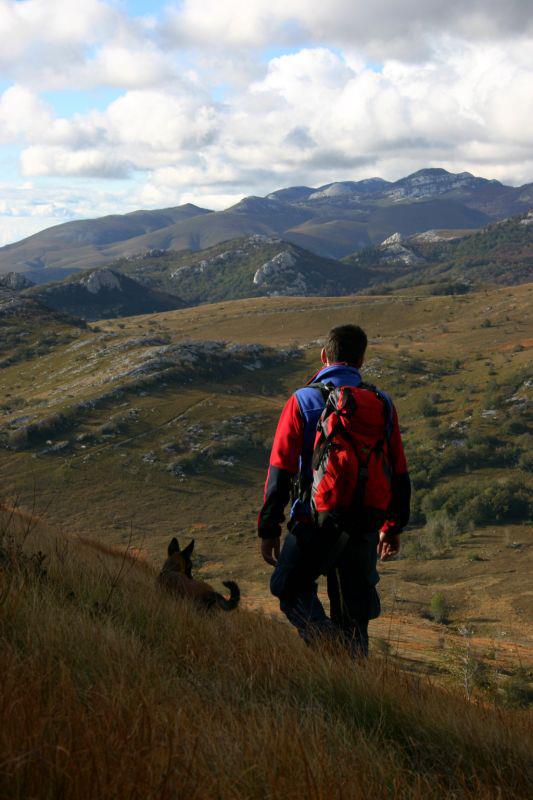
The Croatian Mountain Rescue Service used specially trained dogs on their searches © HGSS The Croatian Mountain Rescue Service
In 2007, I got a new search dog. It came from the Ogwen Valley Mountain Rescue service in North Wales. We cooperate a lot. We were sent out on a job to look for a three-year-old male child who had gone missing near Požega at the beginning of January, wintertime. His grandma was watching him and they were in a house on the edge of the woods. Early in the morning, he was playing with a dog. It suddenly ran into the forest and the boy chased after him. The grandmother didn't see it happen. I found him using my new dog, just after 8 o'clock the next morning. He'd been alone in the freezing forest for almost 20 hours.
Time is really moving fast on a job like that, because it's a kid and because it's so cold. Survival rates in such conditions are not good after 24 hours. When I found him, saw that he was alive, those big eyes looking up at me, it's a crazy feeling. You can't describe it. You can't compare it. A lot of positive emotions.
Every mission is special. We meet them all with the same level of determination and professionalism. But, it's the ones where you know you've really saved someone that stand out in the memory. Not the broken leg, where you transported someone – sure, that's an excellent job. But, when you know you've saved someone's life, that they definitely wouldn't be here now if it weren't for you, that's what makes it all worthwhile.
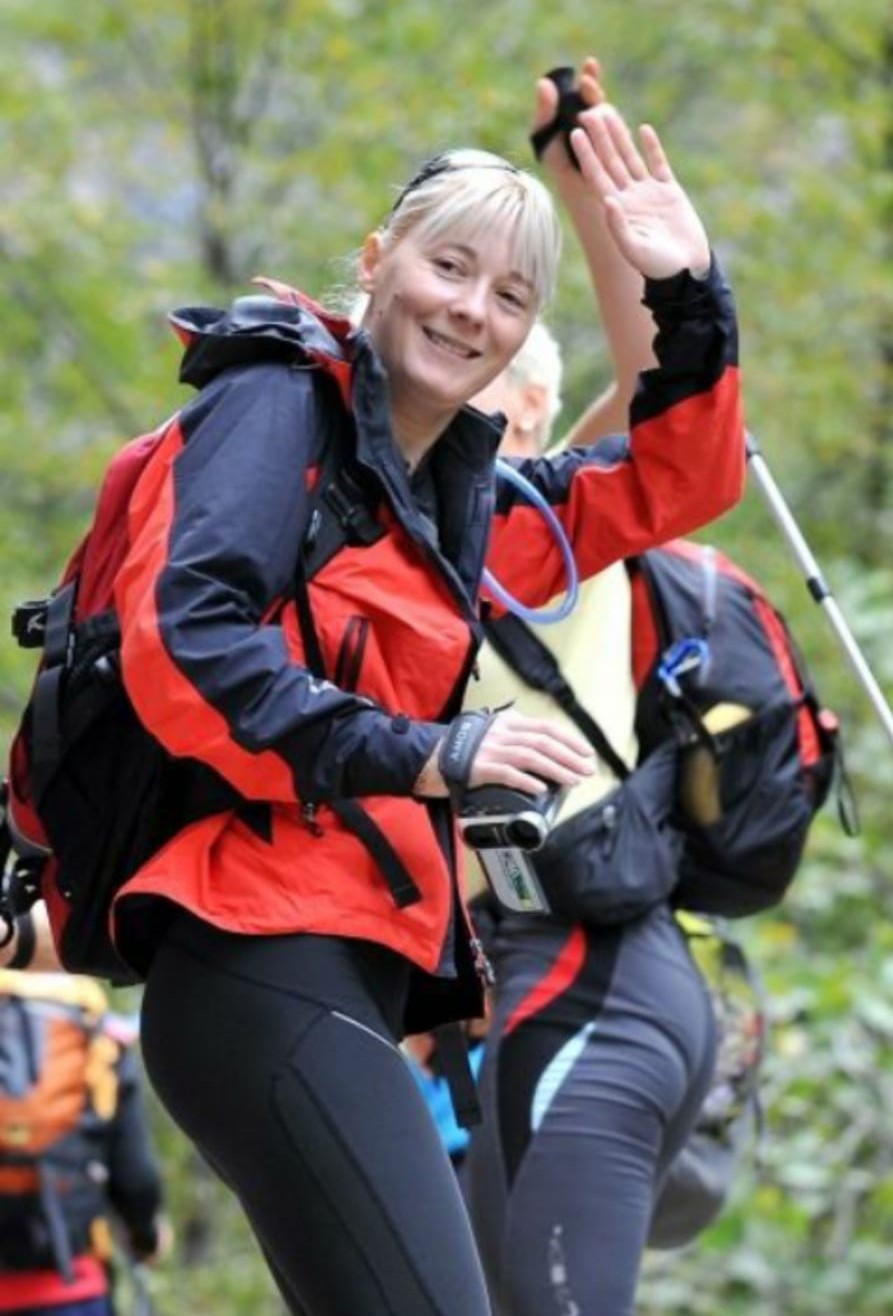
Jana Mijailović, volunteer for HGSS The Croatian Mountain Rescue Service
My name is Jana Mijailović, I'm 48 years old and I'm from Zadar. I finished school to be a teacher, but I never did it. My husband and I run a company that does plastic and aluminium windows for houses.
I started to go into the mountains when I was at high school. I never had the ambition to be part of mountain rescue services – people just noticed me on the mountains. They said I'd be good at it and asked me to join. I met my husband on the mountains. We are both volunteers for HGSS The Croatian Mountain Rescue Service. I've been doing it for 16 years.
I was a member of the first and second all-female Croatian expeditions to the Himalayas. We first climbed Cho Oyu in 2007, then Mount Everest in 2009. Croatia is the only country in the world that has only one successful male climber of Mount Everest, but four successful female climbers. I sometimes work as a guide too. I guess you could say I'm all about the mountains.
Being a climber, an Alpinist, I know that if I get into trouble, it's only my HGSS colleagues who can help. I feel this instinctively. I cannot be in the house, safe and warm, knowing that maybe someone needs help that only I can provide.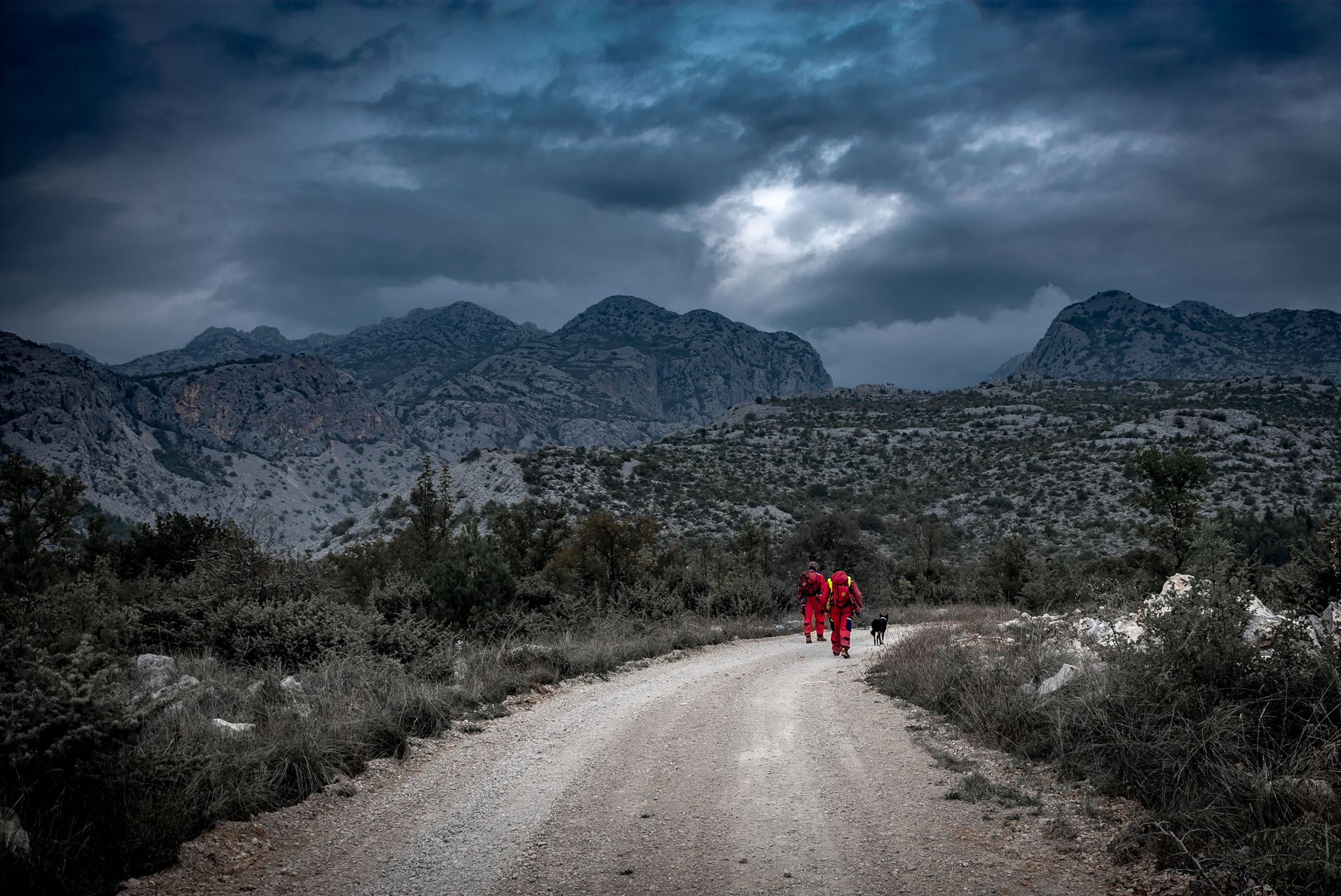
HGSS The Croatian Mountain Rescue Service members entering Paklenica under foreboding skies © HGSS The Croatian Mountain Rescue Service
I've really been on so many expeditions with HGSS. My station are on duty in the season at National Park Paklenica and I'm now the coordinator. Climbers from all around the world come and so there are many interventions. None of them are easy because the terrain is incredibly difficult. You really have to be in shape and know the techniques inside out.
I'm very proud of my statistics. Everyone I've rescued, who was alive when I reached them, is still living today. Unfortunately, not everyone we reach is alive when we arrive.
I remember one time, my husband and I were having dinner. We were arguing about the techniques and knots for moving a stretcher down a vertical climb. The training is so intense, you really have to know it well, and I guess that's just the kind of people that we are, that we would be arguing about it in our free time. Ha! He told me, "Why do you care? You'll never have to do that," because usually, it's really strong guys who do that specific job. If you're on a 400-metre-high section of rock, it really takes a lot of muscle.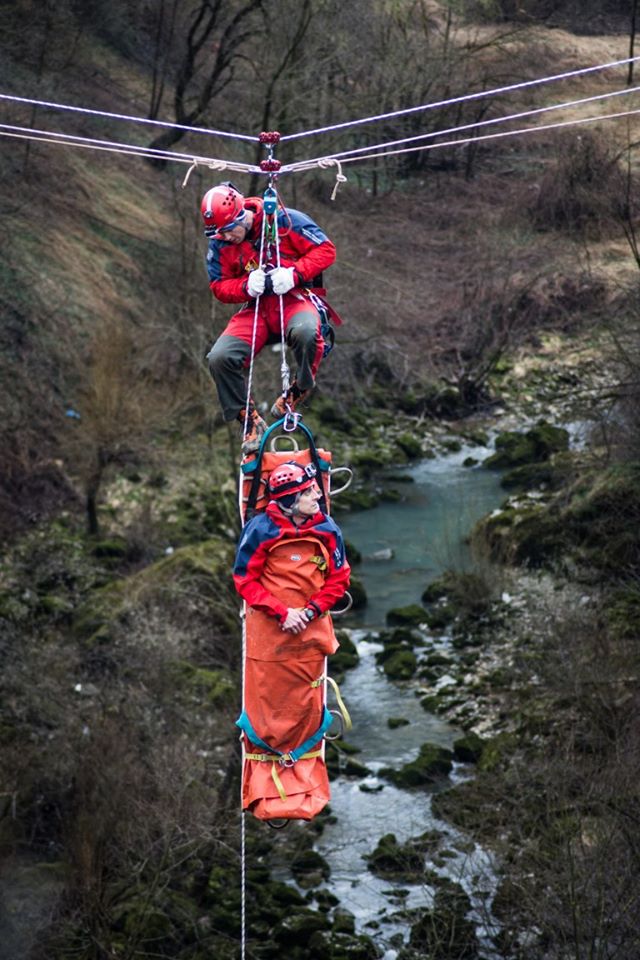
Ascending from a valley floor or descending from a mountain peak with a stretcher is a technically difficult operation, often hindered by darkness and adverse weather conditions. It requires a lot of training and a lot of muscle © HGSS The Croatian Mountain Rescue Service
In the evening, just two days later, we were called out to rescue an Italian guy who broke his leg on Anića Kuk. It's a really mighty part of the stone. And the leader of the expedition asked me to go on the stretcher. They pull you down on the ropes and you have to push very hard to keep the stretcher, the person you're carrying and yourself away from the rock, while balancing the weight of all three. It was dark, raining and with lots of Bura, the incredibly strong wind that sometimes hits us. That's probably my most memorable rescue.
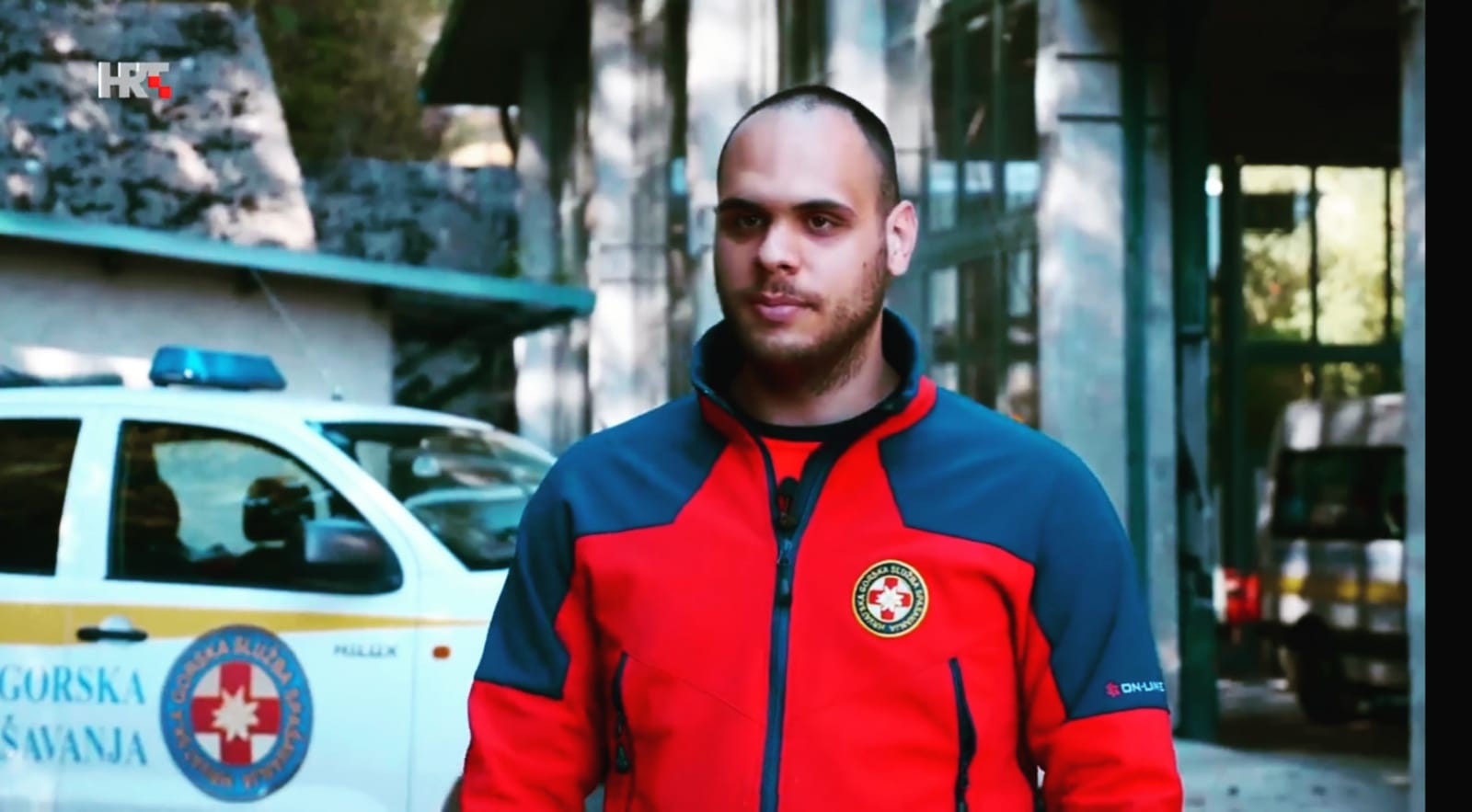
Petar Prpić, firefighter and volunteer for HGSS The Croatian Mountain Rescue Service
My name is Petar Prpić, I'm 25 years old and I'm from Hrvatska Kostajnica, just on the Croatian-Bosnian border. My station is in Novska. In my full-time job I'm a professional firefighter. I guess I have two dangerous jobs. Well, one job and one hobby.
I've always been interested in the outdoors – mountaineering, hiking, canoeing. But, that's not why I joined HGSS The Croatian Mountain Rescue Service. I just wanted to help people. I don't know, I guess it's just something in me.
We have a lot of rivers in our area. During the times of flood, we get a lot of call-outs. Our part of the country has a high percentage of elderly people in the population. A lot of them live in small villages, on the edge of the forest. We get a lot of call-outs for searches. Especially in the autumn when people go out looking for chestnuts or mushrooms. But, like all the stations in Croatia, we are here year-round if there are any actions in other parts of the country that need us.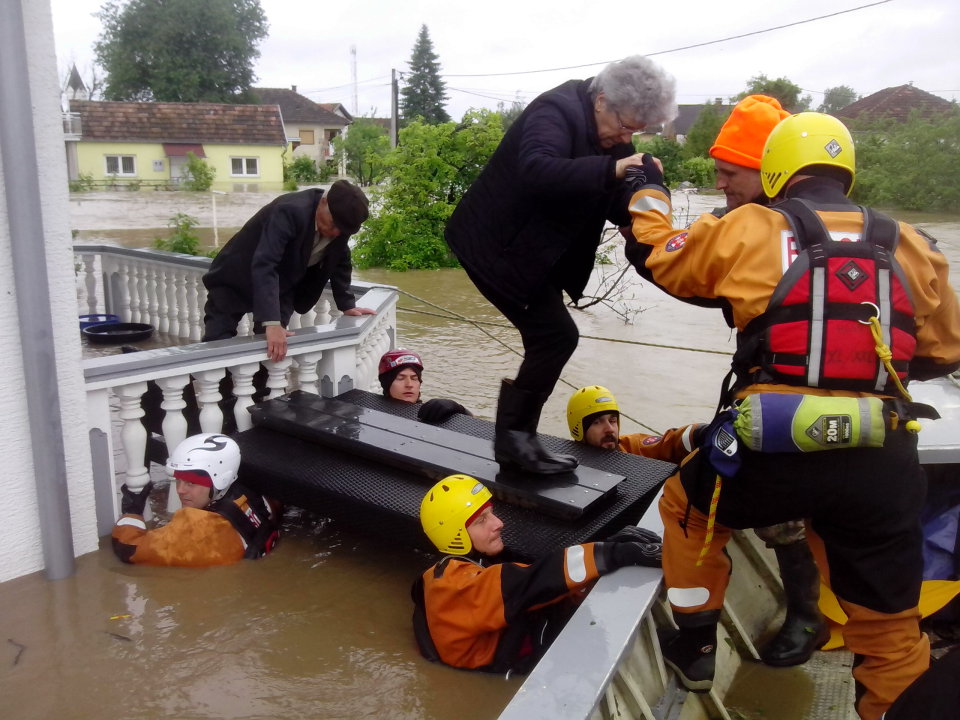
In some areas, HGSS The Croatian Mountain Rescue Service are frequently called out in response to flooding. This picture shows HGSS members on operation during the 2014 floods. In that year, flooding across the whole region was so bad that HGSS members operated not only in Croatia, but also donated their services to neighbouring Bosnia and Serbia © HGSS The Croatian Mountain Rescue Service
I was just on the search in Biokovo. The head of service called me and asked me to go. I first had to get some free days from my job. I called my boss, Zvonimir Ljubičić, chief of the fire department. He's great, very understanding, and he gave me permission. Two years ago I was called to Rab. Very hard operation, very difficult terrain.
Late last summer, we were called out to look for an older man near Glina. It was around 11 o'clock in the evening. He'd gone to look for mushrooms in the afternoon and never came back. Police were there and they sent for us.
The man had a cell phone on him, but there was no signal. There was no location given off the phone. We were a team of four, split into two teams. We went up into the woods above Glina and concentrated our search on areas where we could see there was no telephone signal on our phones. We were yelling in the dark. After an hour of search, someone answered. He'd been missing since 2pm. We found him at 2am. He was just lying there, uninjured but unwell, unable to move.
The reason it sticks in my mind is that the next day, in the morning, his daughter called me. She was so thankful, so emotional. For sure we saved his life. None of the other emergency services who were present could find him. It was down to us. We finished the operation at about 6am and then all four of us had to go immediately to our regular jobs.
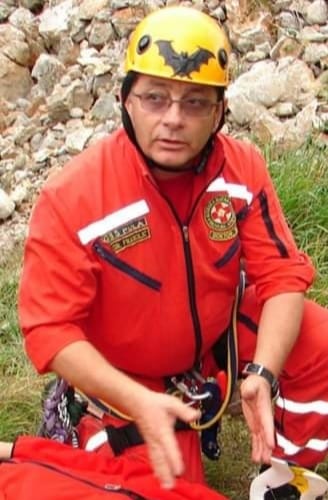
Mario Franolić, physician, ex-commando and volunteer for HGSS The Croatian Mountain Rescue Service
My name is Mario Franolić and I'm 60 years old. I'm the chief of the mountain rescue service in Istria. I travel throughout Croatia because I'm also an instructor for the medical commission of HGSS. I was born on island Krk. I'm based in Pula although I work in Rijeka. I travel a lot between the two. I've been with HGSS The Croatian Mountain Rescue Service for 18 years.
In my day job, I'm a physician. I am a senior mentor at the Institute for Underwater and Hyperbaric Medecine in the Clinical Hospital Rijeka. I'm an expert in my field of emergency medecine. I've been doing it for almost 30 years.
When I was young, I trained to be a physician in Belgrade. It was then the best medical faculty in Yugoslavia. At the same time, I also started spelunking (cave exploration). I've been doing it since 1978. Later, I was a physician in the military underwater commando unit. I lived in Austria for five years, but when I came to Pula, they were just starting the HGSS The Croatian Mountain Rescue Service station here. They asked me for help because they didn't have any medical professional on the team. I accepted. It would be a waste not to use all these skills I have.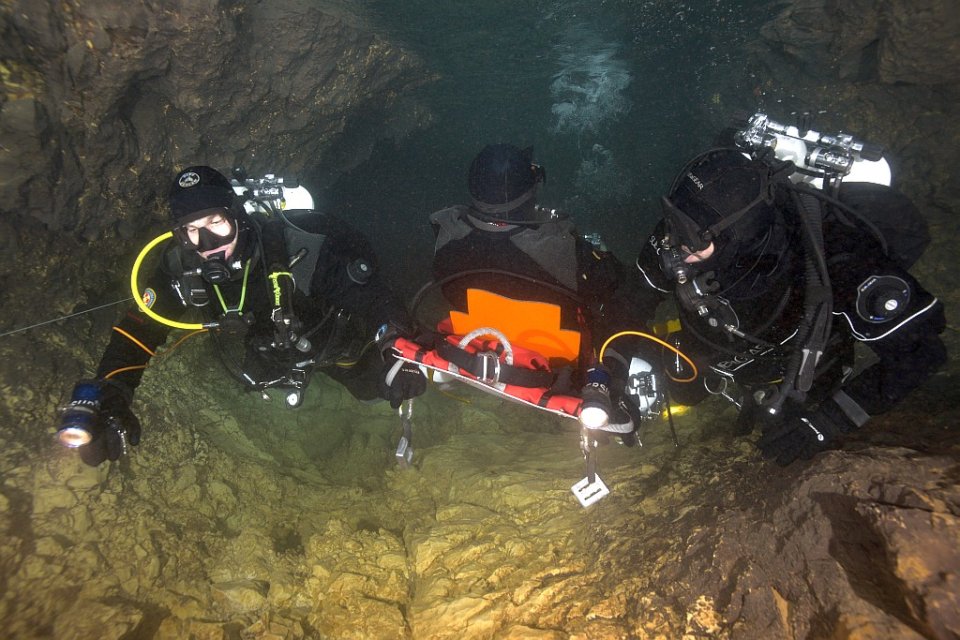
Specialist teams from HGSS are trained in underwater rescue from caves. Such caves exist all over Croatia in the karst rock, and also on some islands © HGSS The Croatian Mountain Rescue Service
Sometimes, our status as volunteers can give us problems. Although we have official duties, we are more like an NGO than something like the police. There can be legal implications. I remember one situation, very acute because a paraglider fell from the sky. None of his colleagues saw him fall. Paragliders go into the air together, but then they each branch off to do their own thing.
We had no idea about the location. We started from the last point of sighting, knowing that it could be very far from the place where he actually fell. But, we had to start somewhere. We had one mobile phone signal direction. But, you need three in order to locate someone. We only had a line on the map.
In the past, HGSS The Croatian Mountain Rescue Service sometimes had difficulties because the telephone companies wouldn't give us the information we needed in order to triangulate the position of a missing person. They would only give it to the police. But, it's a race against time. We searched for this man all day and all night. In the morning, some Croatian paragliders made private contact with a guy from the phone company. They begged him to release the information we needed. Although he could lose his job, giving such information to private citizens, he did it.
We found the man about 150 metres from where we were. Sadly, he was already dead. It was very small comfort to see that he had died instantly, on impact. It's unbearable when you reach someone you could have saved if only you had got there quicker, especially in an instance such as this, where we were hindered by a lack of information that was available. I think it moves more quickly now, but still we have to go through the police.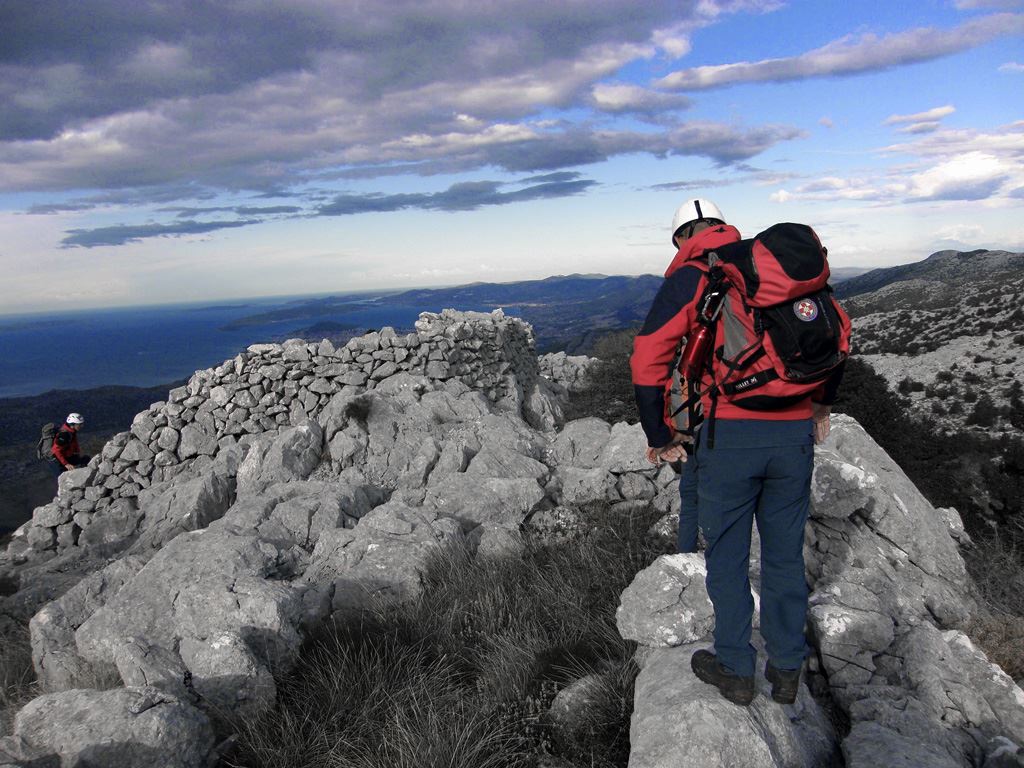
© HGSS The Croatian Mountain Rescue Service
One of the most emotional operations I went on was around five years ago, the rescue of a young girl - maybe two and a half to three years old – who got lost in the woods in a small place in central Istria. She chased into the forest after some dogs around 10 or 11 in the morning. The family saw immediately that she had disappeared and started to search. About two hours later, we were called out. It was impossible for the family to find her.
About 300 people came – my station, the Rijeka station, hunters, firemen, police and volunteers. In such an operation, the police are the lead service. But, 99% of the time they leave the organisation of the search to HGSS The Croatian Mountain Rescue Service. We are the only organisation who is very well educated in organising searches. When other people do searches, they use intuition. But, people all have different intuition. It can be chaotic. We are highly trained for this. There are procedures, recognised internationally, that we follow. We found her early in the morning, at around 7 o'clock. The dogs were lying on each side of her, giving her warmth.
All photos courtesy volunteers and HGSS The Croatian Mountain Rescue Service


